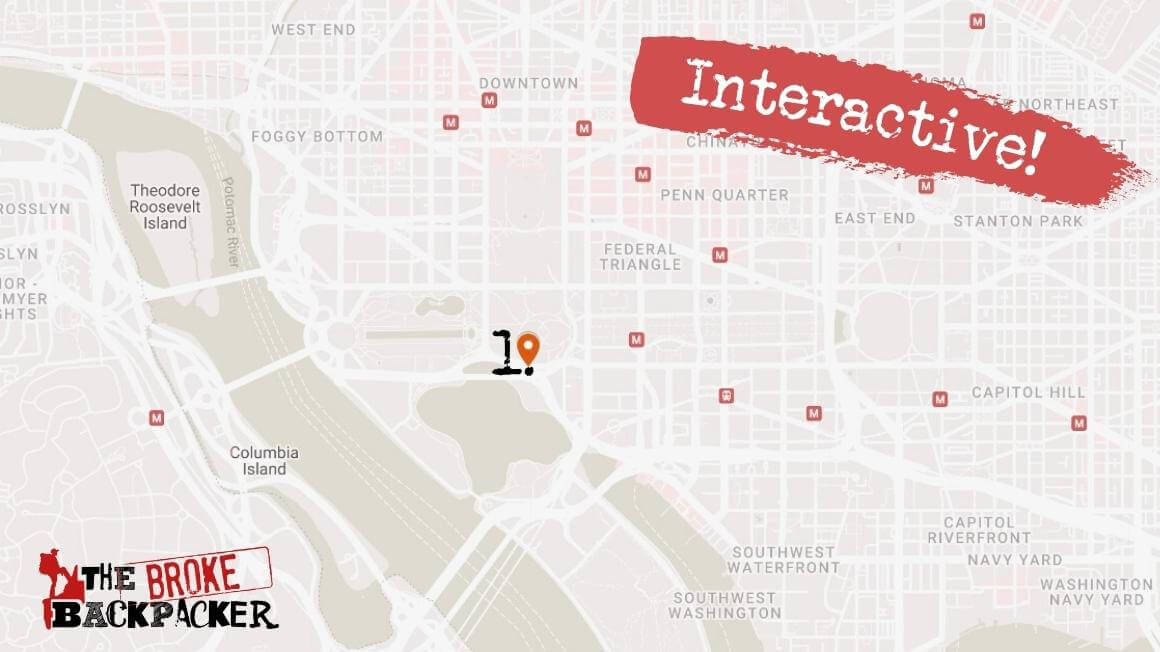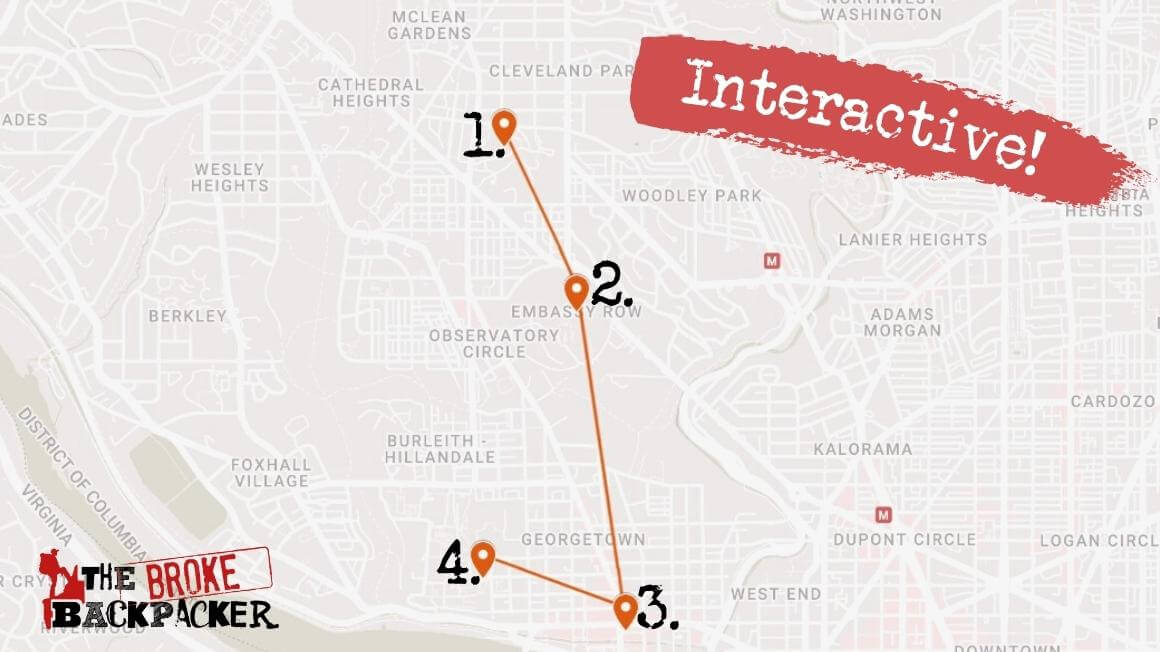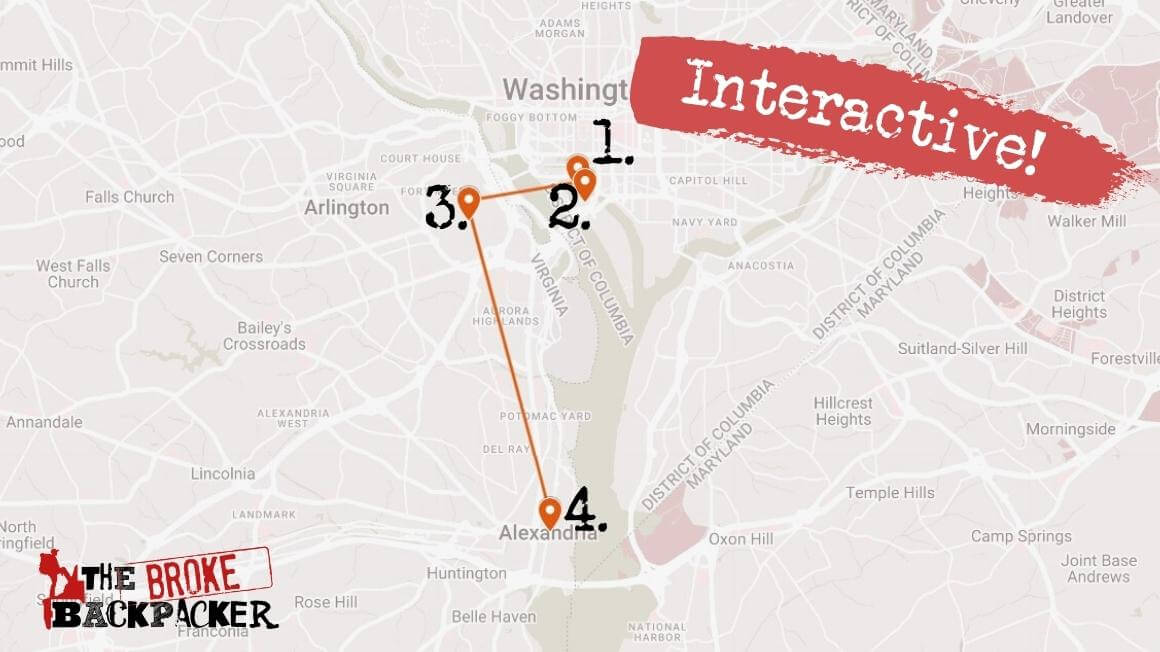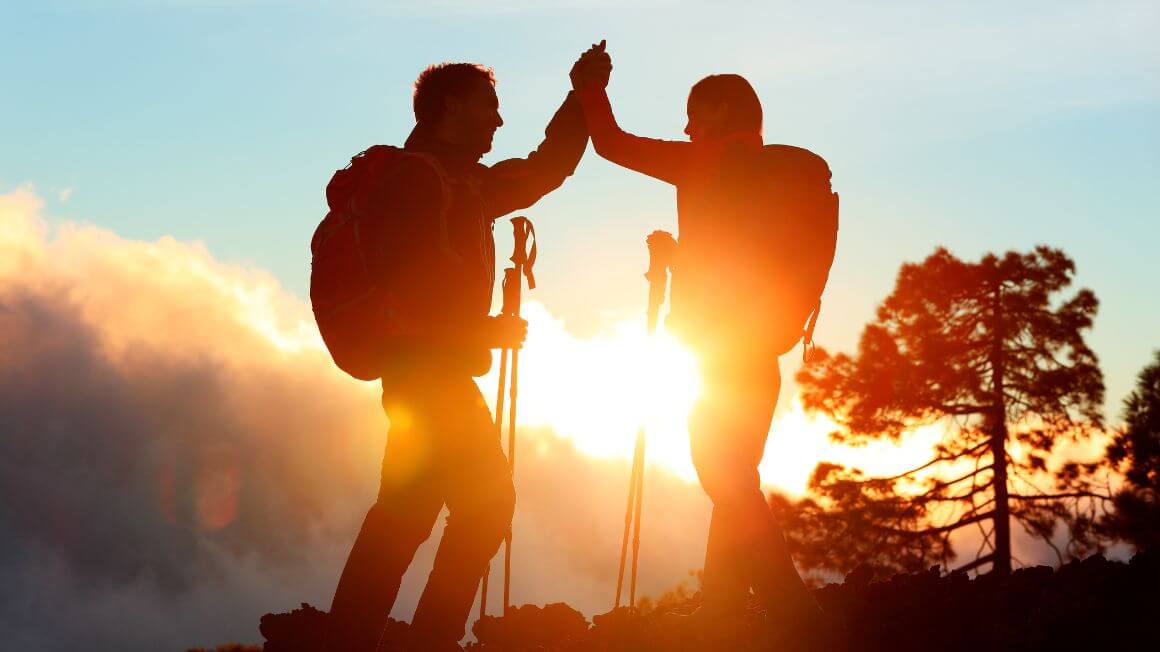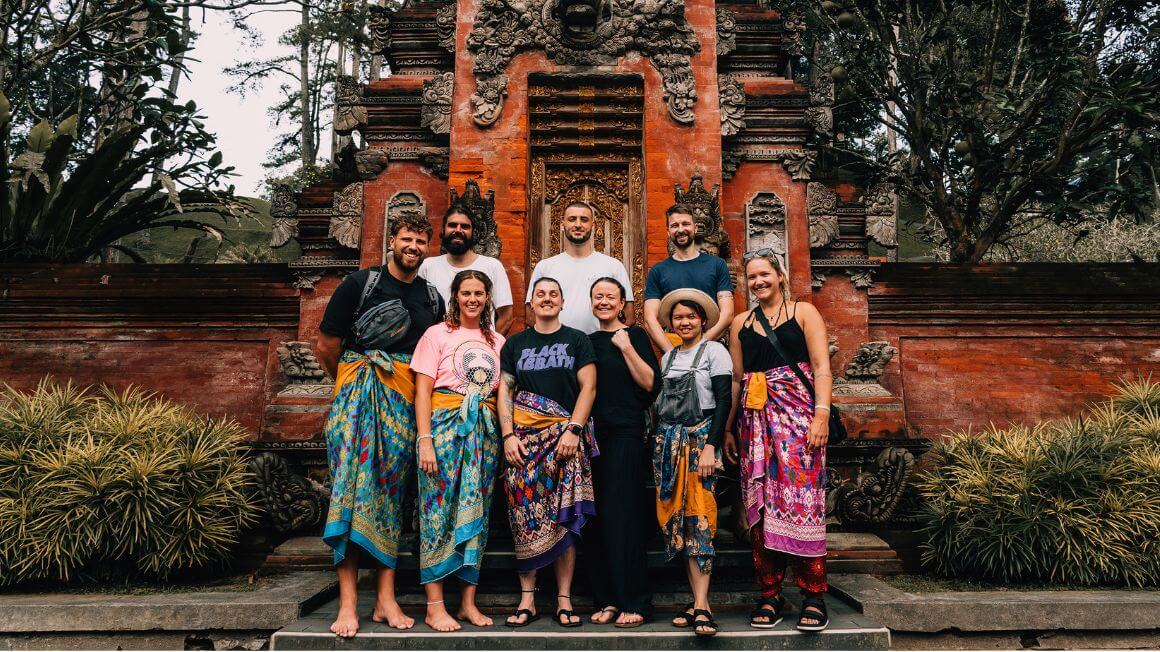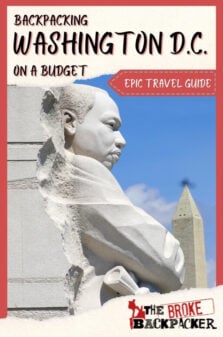Washington DC is the capital of one of the most infamous nations in the world. Here, the streets are lined with homages to former heroes; there are towering monuments that were built to inspire the people, and there’s a big statue of some hipster sitting in a chair. (I am, of course, referring to the Lincoln Memorial.)
This is Washington DC – our City Upon a Hill.
But what is there to do in this town besides learning about some old dudes and to listen to people debate endlessly about the state of the country?
This Washington DC travel guide intends to answer that question.
By the end of our Washington DC travel guide, you should have a great idea of what to do and see in the capital of the USA.
So without further ado, let’s get to it!
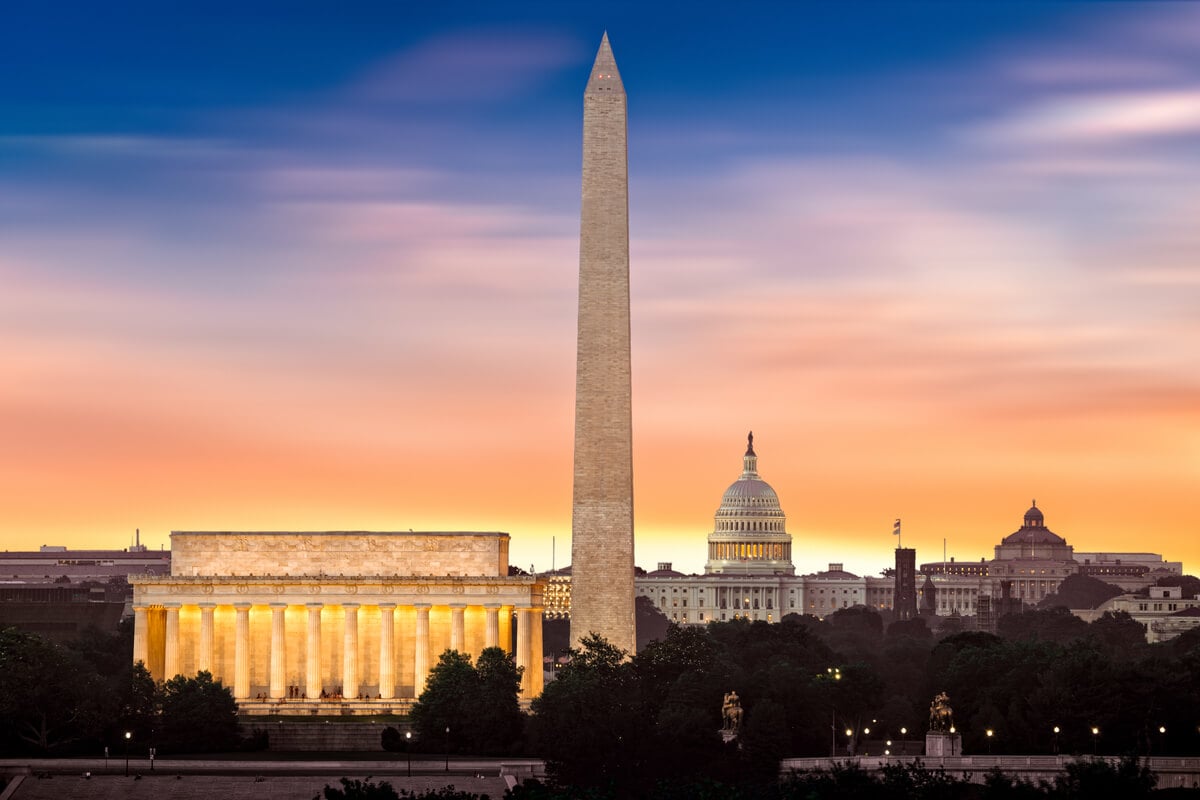
The Broke Backpacker is supported by you. Clicking through our links may earn us a small affiliate commission, and that's what allows us to keep producing free content 🙂 Learn more.
- Why Visit Washington DC?
- A Sample 3-Day Itinerary in Washington DC
- Top Things to Do in Washington DC
- Accommodation in Washington DC
- How Much does Travel to Washington DC Cost?
- Best Time to Visit Washington DC
- Staying Safe in Washington DC
- How to Get Into and Around Washington DC
- Working and Volunteering in Washington DC
- Nightlife in Washington DC
- FAQs About Traveling to Washington DC
- Final Advice Before Visiting Washington DC
- Buy Us a Coffee!
Why Visit Washington DC?
No USA trip could be truly complete without visiting Washington DC. The nation’s capital holds an infinite amount of history, hundreds of years worth in fact.
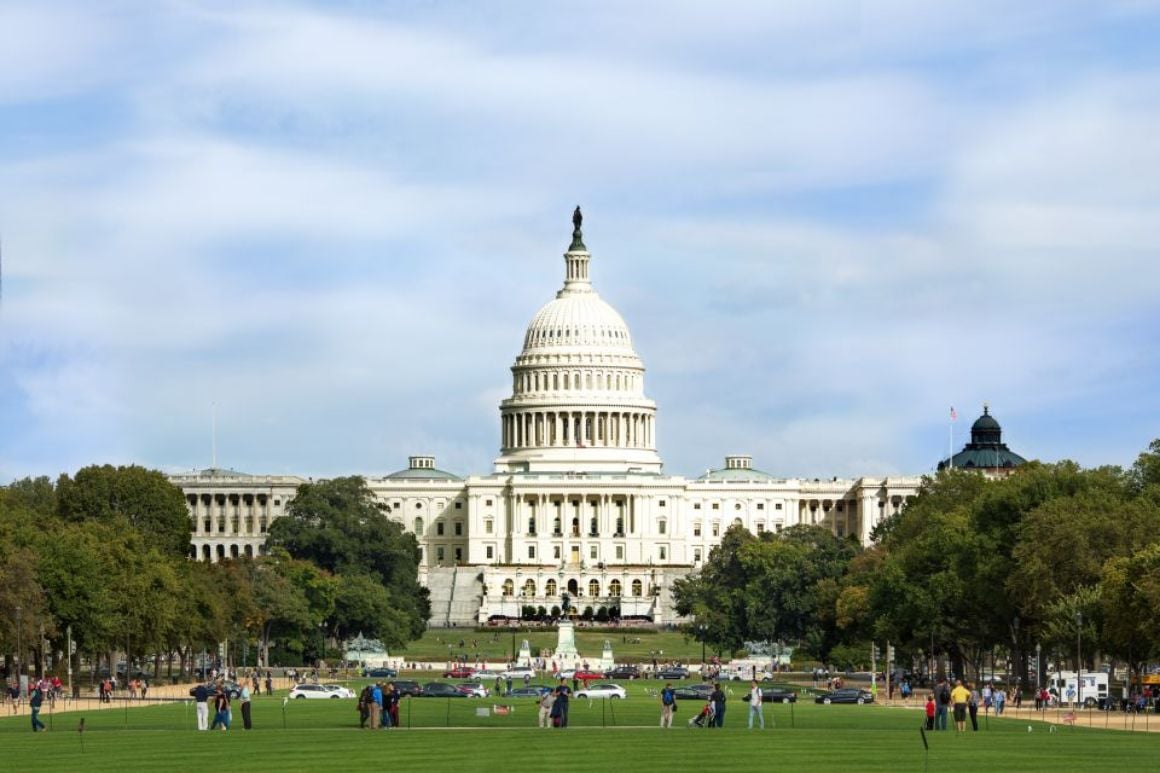
Some of the country’s most famous monuments can be found here, and it’s also got the BEST museums in the entire US. Moreover, Washington DC makes it easy to explore. It’s by far the cleanest and most organized out of all American metropolises, and most of the main attractions are within walking distance of each other.
Traveling to Washington DC will transport you back in time, while simultaneously treating you to a modern experience that anyone will enjoy. While it might not be the craziest place to party or be filled with sunny beaches, D.C. is truly a place like no other. Everyone should experience it at least once!
What Are The Major Attractions in Washington DC?
As much as you should get off the beaten path while traveling in Washington D.C., there are some historic attractions that you just have to see, and they’re all worth the hype.
Don’t miss out on these top places to visit in Washington DC:
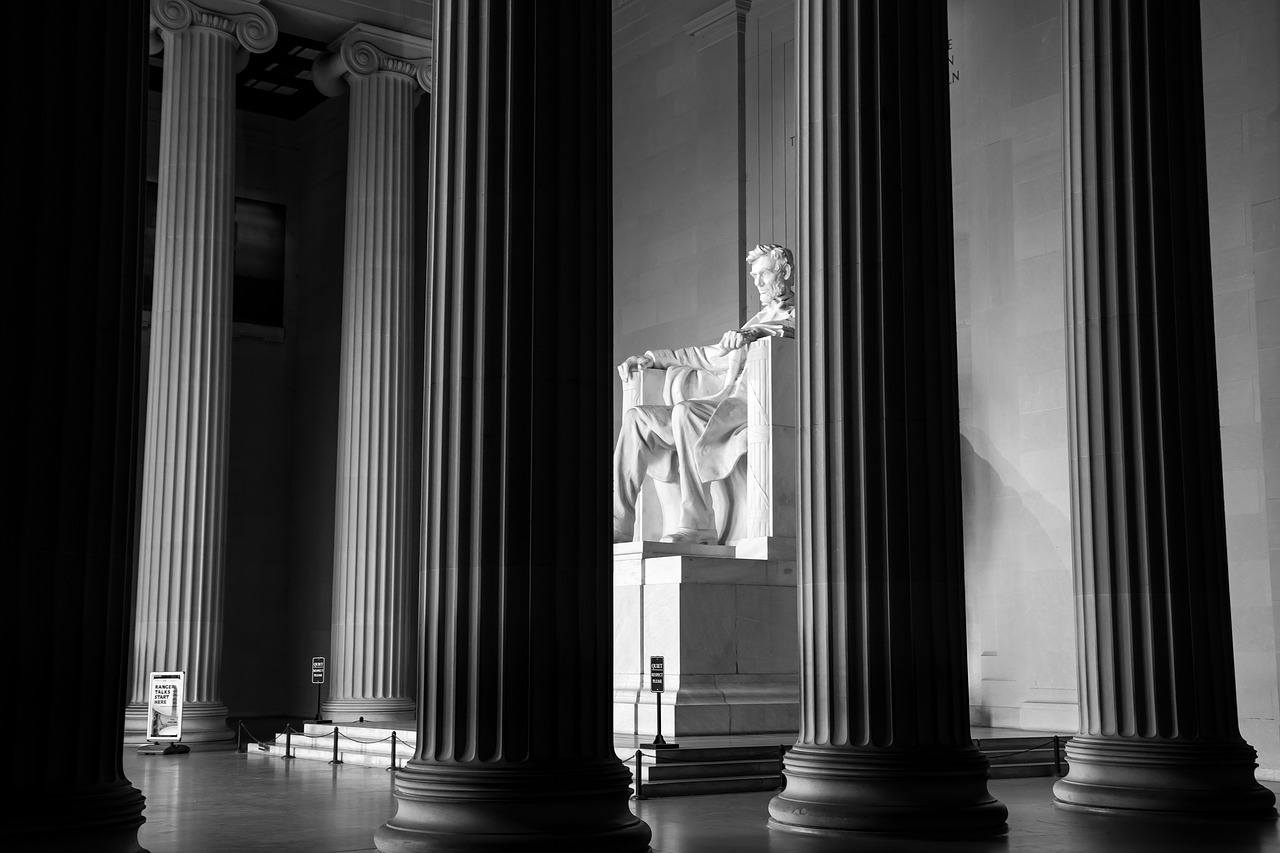
- The National Mall
- Capitol Building
- Smithsonian Museumscap
- The White House
- Georgetown
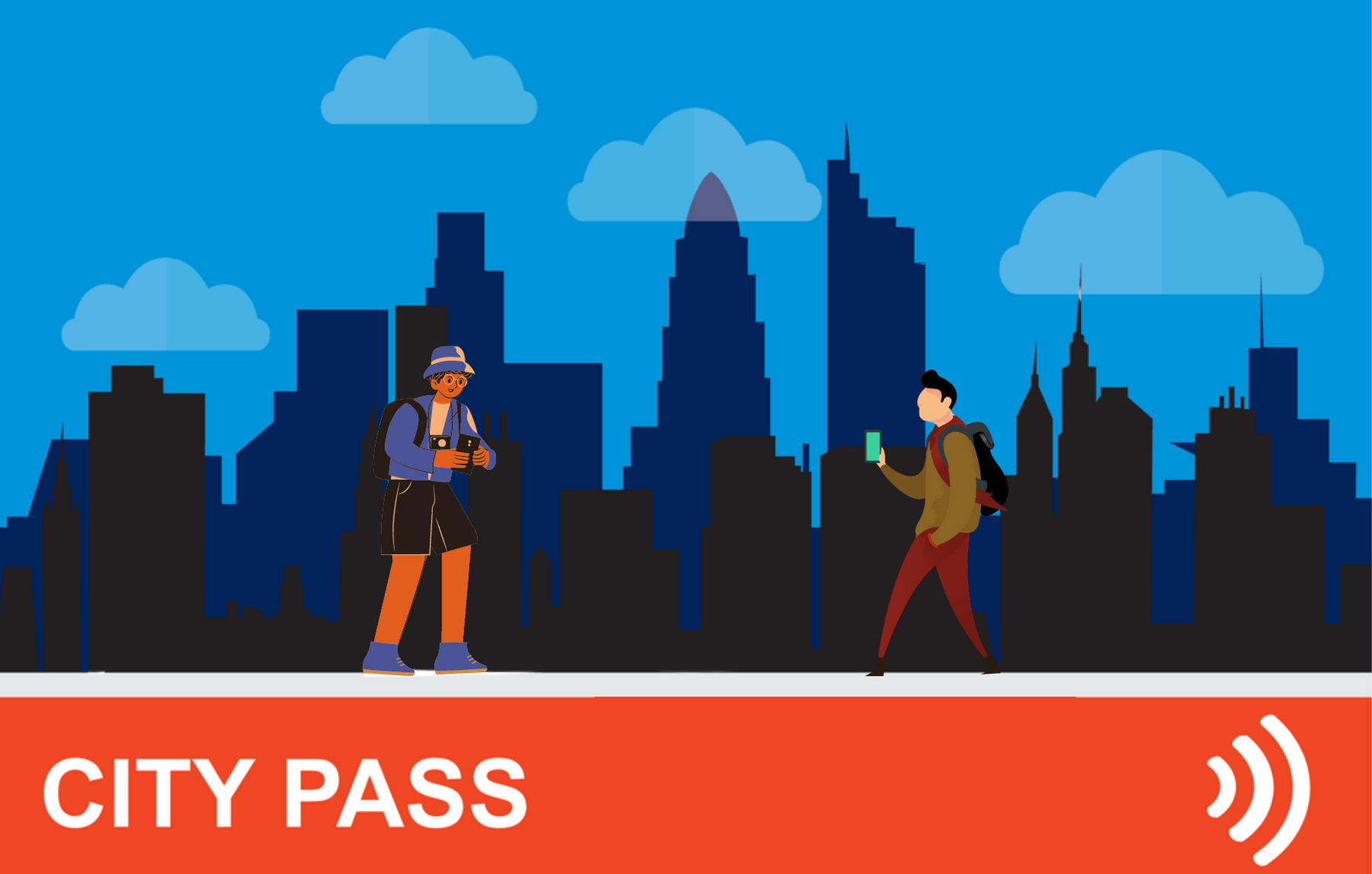 Travelling to Washington? Then plan yo’ trip the smart way!
Travelling to Washington? Then plan yo’ trip the smart way!
With a Washington City Pass, you can experience the best of Washington at the CHEAPEST prices. Discounts, attractions, tickets, and even public transport are all standards in any good city pass – be sure invest now and save them $$$ when you arrive!
Buy Your Pass NOW!How Long Should I Spend in Washington DC?
3 days is the ideal amount of time to spend in Washington DC. With that, you’ll get to see the city’s major attractions, and even a few less-visited ones if you want. If you really want to see EVERY historical site on offer in the Capital, 5-7 days might be better.
The following is a sample 3-day itinerary for a weekend in Washington DC. Most of the top destinations mentioned in this Washington DC travel guide are covered in this section.
Day 1: National Mall
We’re going to be spending the near entirety of the day around the National Mall. This enormous green space is like an exhibition in itself for Washington DC’s greatest sights. It is a very busy place – receiving over 24 million visitors per year – but this makes perfect sense considering the significance of the park.
Let’s start at the east end of the Mall at the US Capitol Building. This is where the House of Representatives and Senate hangs out. The building itself is most recognizable by its large dome–Do check out the National Statuary Hall while inside. Nearby is the Library of Congress and the Supreme Court.
Walking down the steps, we hit the trails and start our journey to the other end of the Mall. Over the course of 2 miles, we’ll pass by some of the most important museums in the entire USA.
The likes of the Smithsonian museums: the National Gallery of Art, and the African American Museum of Art and Culture, among many, many others, line both sides of the park.
Further down is the prominent Washington Monument. Nearby is the iconic Reflection Pond and a wonderful monument to Martin Luther King.
At the western terminus of the Mall is the Lincoln Memorial, which arguably the most hallowed building in the city. Sheltered by a neoclassical temple is a regal statue of the man himself. Take a moment to appreciate this place and the person it commemorates.
Do what you can today; I know there are a lot of attractions to see on day one in Washington DC. Tomorrow will be a bit more laidback.
Day 2: Georgetown
On the second day of this travel guide for Washington DC, we head to the affluent Georgetown neighborhood. While many scoff at this area for being snobbish or pretentious (it kind of is), there are still lots of cool spots here to check out.
If you wake up early, then consider starting your day a bit north of Georgetown at the Washington National Cathedral. This location is not often on the tourist trail, which is a shame. Aside from being just gorgeous, it also has a lot of little cheeky features, like a stained-glass window of space and a gargoyle resembling Darth Vader.
Whether you visit the Cathedral or not, head to Embassy Row next. As the name implies, this street hosts the majority of foreign governments.
Often times, these embassies open their doors to tourists for the sake of promoting their cultures. There are often street parties, tastings, and banquets held here.
As we move on from Embassy Row, we enter into Georgetown proper. First place you’ll pass by is Dumbarton Oaks – an opulent estate and one of the best places to see cherry blossoms in the spring.
Hang a right to visit Georgetown University. This is one of the most prestigious and most beautiful colleges in the entire United States. Much of the campus was built in Gothic style and is a stark contrast to the dominant neoclassicism back in DC. Healy Hall is the university’s centerpiece and is an absolute treat for the eyes.
Film buffs should be sure to look for the “Exorcist Steps,” located not too far from the University. These steps provided the scene for the final shots of the iconic movie.
Day 3: Free day in Washington DC
Go for a walk around the languid Tidal Basin and stop by the Jefferson Memorial, the latter of which was designed after my favorite Roman building.
Next up, take a drive out to the Arlington Cemetery before ending your last day in DC in the quaint Alexandria.
There are plenty of places to eat in this area, but feel free to head back to proper DC to end your Washington DC foodie experiences your own way.
Spending More Time in Washington DC?
If you have more time on your hands, giving a little more of it to the nation’s capital will be worth it: there’s a lot more to see here!
Here are a few more Washington DC attractions to add to your itinerary:
- See ALL the museums: The quality of this city’s FREE museums is unmatched. You can easily spend all day in just one, and even then you probably won’t see everything. If you’re a museum lover, a few extra days in DC will allow you to see a whole lot more.
- Visit the Eastern Market: If you’re in town on a weekend, don’t miss out on the Eastern Market. It has loads of interesting things to buy, and has a unique vibe as far as US outdoor markets go.
- Check Out the United States Botanic Garden: Located on the grounds of the US Capitol, this lovely botanic garden will transport you away from the city.
- Eat at the Eden Center: Try 30+ delicious Vietnamese restaurants at the largest Asian-themed mall on the East Coast.
- Walk Through Rock Street Park: The third national park to be established, this massive outdoor space is one of the best natural areas in or around DC.
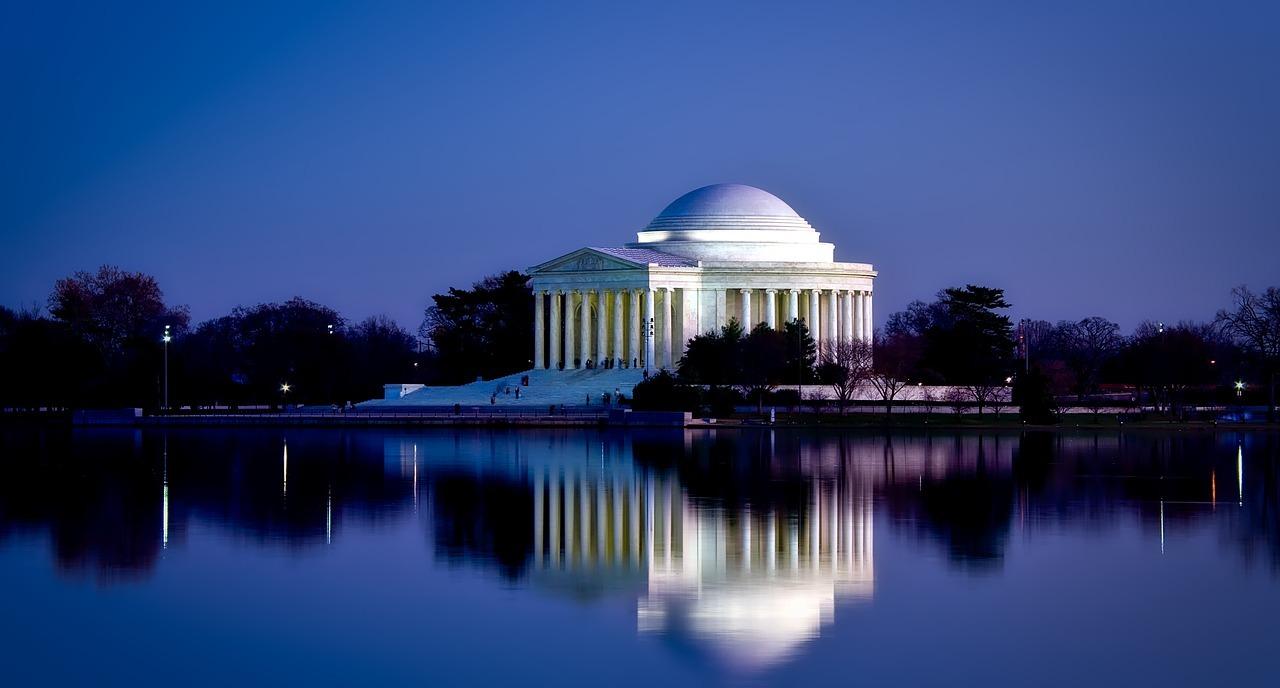
Want to save money on accommodation?
Enjoy 15% OFF on stays ALL around the world.

A new country, a new contract, a new piece of plastic – booooring. Instead, buy an eSIM!
Jetpac eSIMs work just like an app: you download it, pick your plan, and BOOM! You’re connected the minute you land. It’s that easy.
Read about how e-Sims work or click below to see one of the top eSIM providers on the market and ditch the plastic.
Grab an eSIM!Top Things to Do in Washington DC
These are 10 of the absolute best things to do in Washington D.C., with a few off-the-beaten-path ideas thrown in.
1. Tour Washington DC’s National Mall
What kind of Washington DC travel guide would this be without a visit to The Mall (not the shopping kind). The National Mall hosts pretty much every significant landmark in DC and bunch of museums as well. If you don’t care about that kind of stuff, it still makes for a great picnic spot.
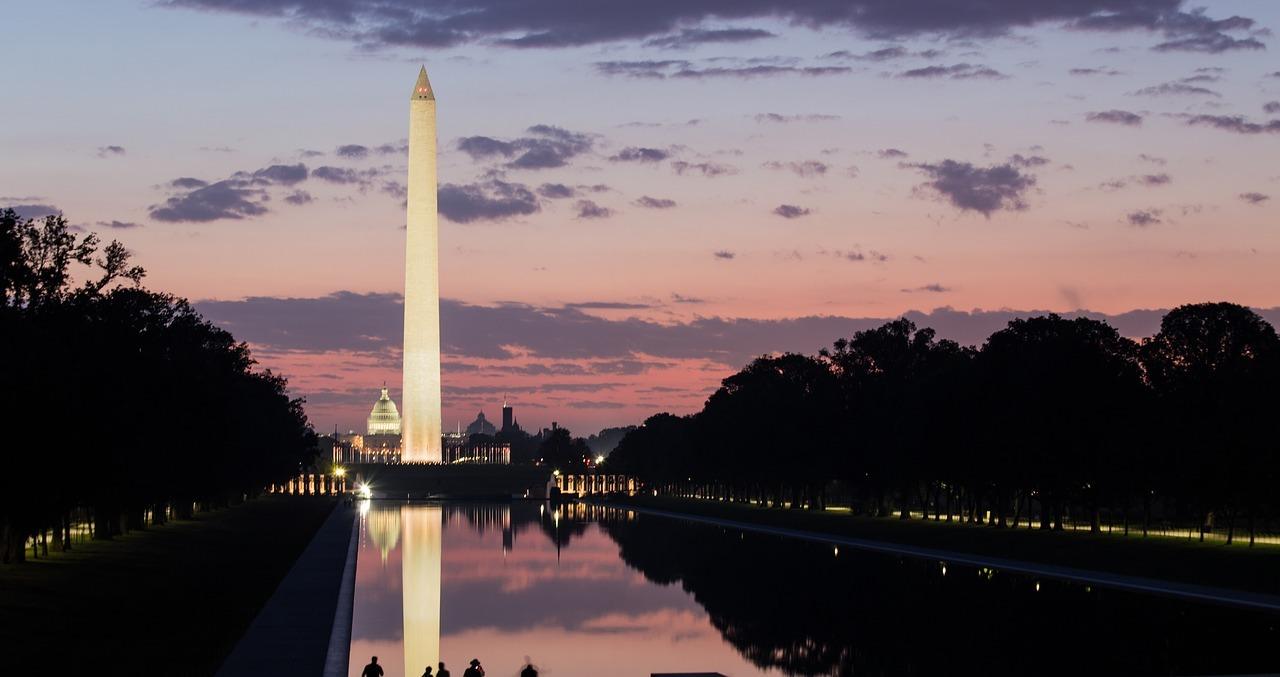
2. Watch the Changing of the Guard at Arlington National Cemetary
Every day at around sunset, the honorary guard posted at the Tomb of the Unknown Soldier in Arlington change watch duties. It’s an extremely meticulous choreography and is kind of mesmerizing in its rhythms. Definitely incorporate this into your Washington DC travel plans.
3. Enjoy the cherry blossoms
The absolute best time to be planning a trip to Washington DC is in the spring when the cherry blossoms bloom. When they’re at their peak and are just about to fall, the city is absolutely magical and could easily give Japanese trees a run for their money.
The National Cherry Blossom Festival also occurs annually from mid March – mid April.
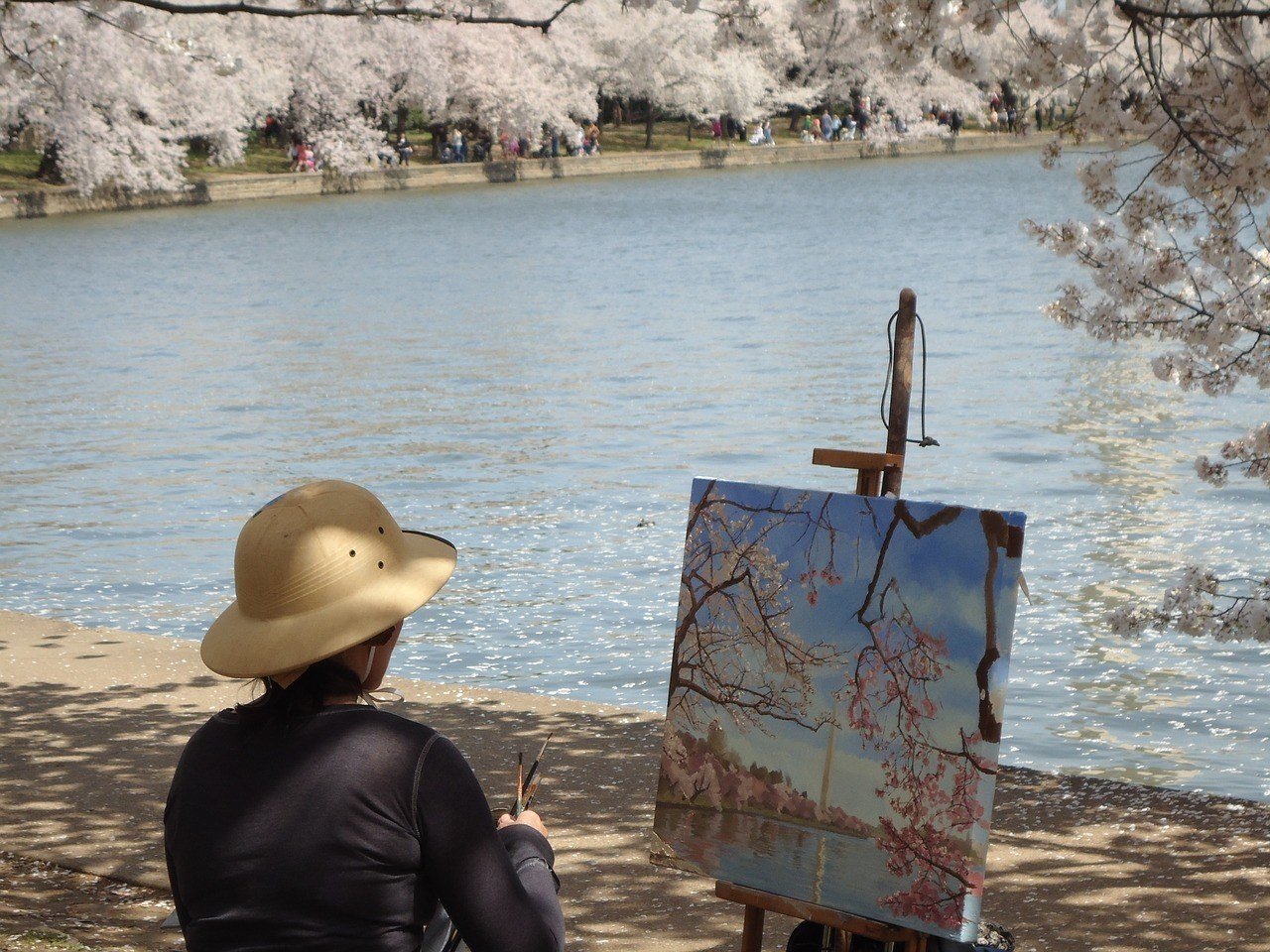
4. Take Advantage of the Free National Museums
One of the coolest things about Washington DC is that you can visit many of its most famous museums for nothing at all! The Smithsonian, National Portrait Gallery, the National History Museum; all of these and more are free!
5. Get involved in local community art
Even though it is a city that stands for the betterment of humanity, DC still suffers a lot from social inequality. Local artists often approach this inequity via art installations around the city. Join the conversation with organizations like Art Enables and visit venues like the Dupont Underground.
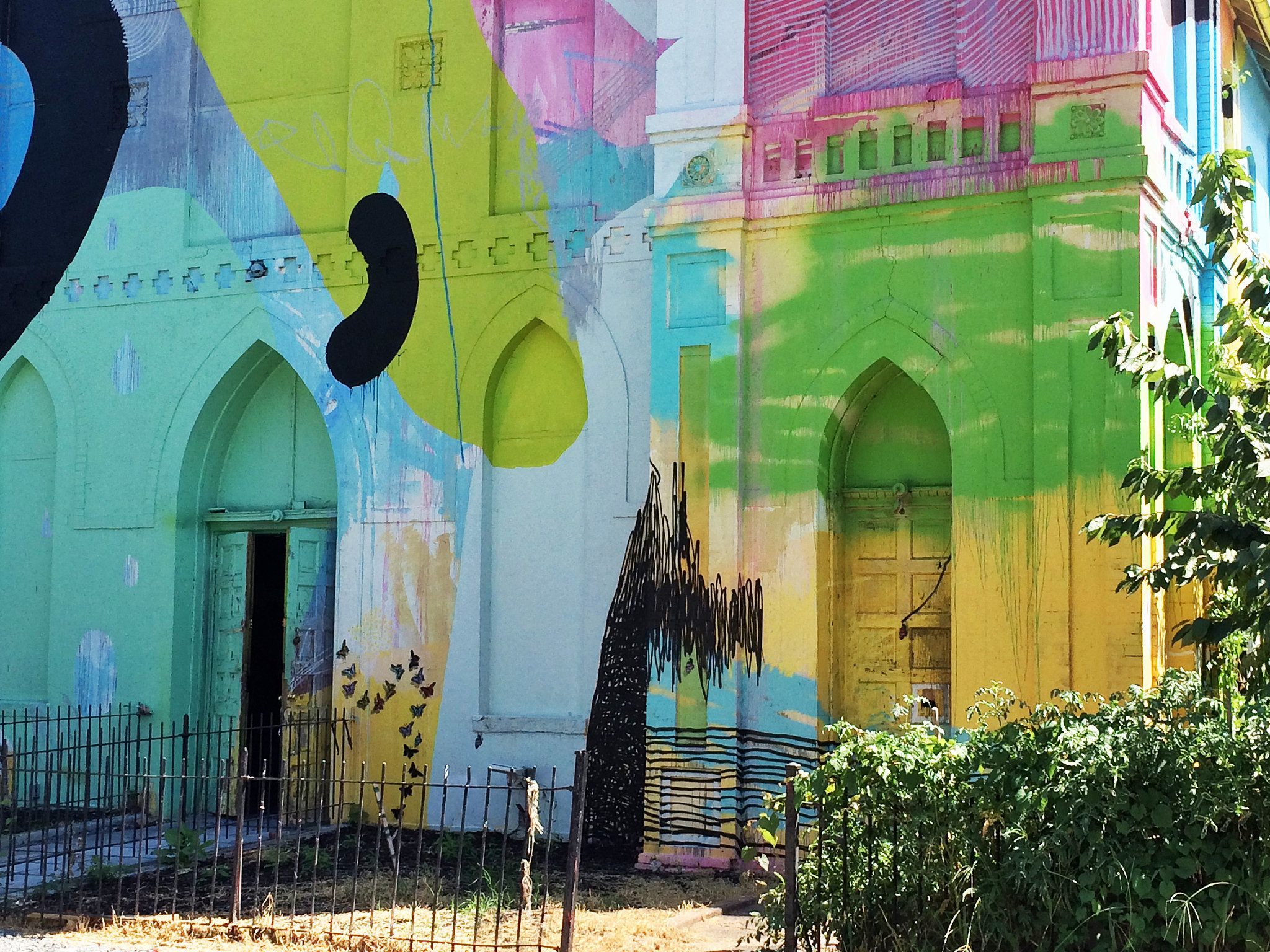
Photo: Sharon VanderKaay (Flickr)
6. Be Fancy in Georgetown
Georgetown is one of the most desirable, most upscale neighborhoods in Washington DC. It’s charming to a fault sometimes and is worth visiting for a day. Just don’t buy anything here unless you’re ready to take a loan out.
7. Walk around the Tidal Basin and the Wharf
Be sure to include this area next to the Potomac on your Washington DC itinerary. There are lots of lovely walking trails around and you get to visit one of the best monuments in DC: the Jefferson Memorial.
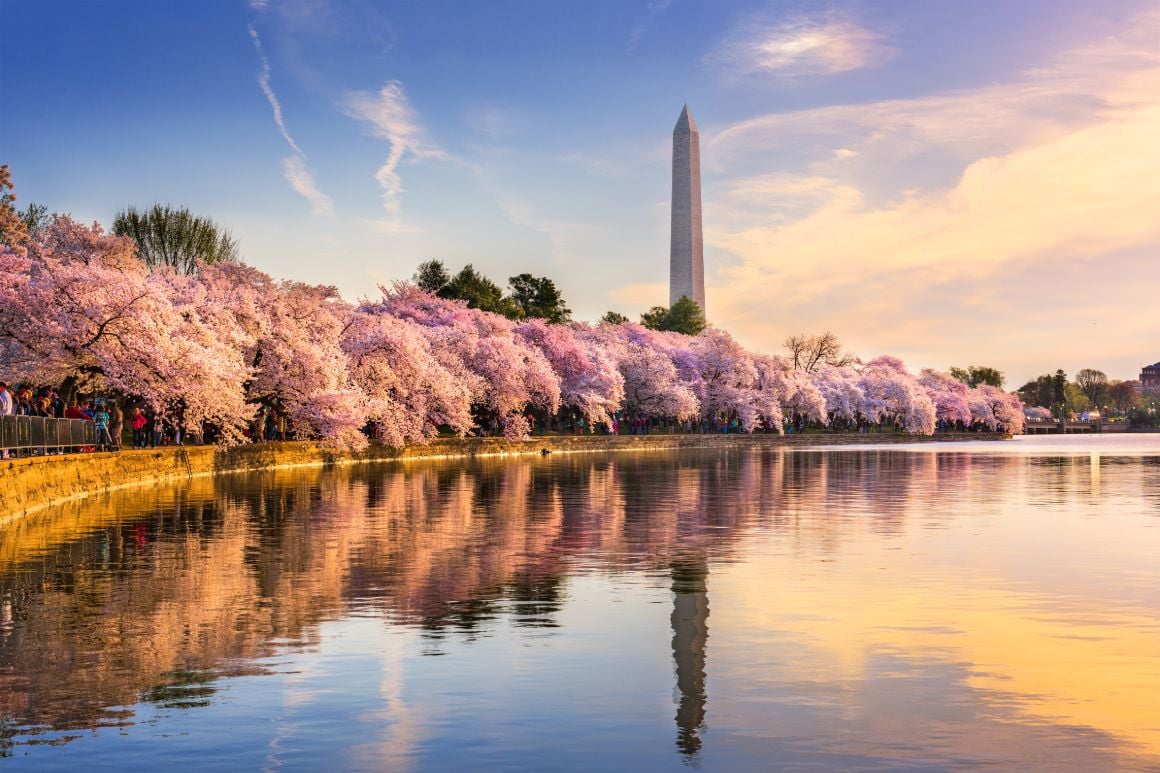
8. Try not to be a tourist
Washington DC is one of the most visited cities in America and every day it’s attractions are becoming more and more established. Why not try visiting some lesser-known parts of DC though, like H-Street and Inner East? There are some really fun things to do in these DC districts and you won’t have to deal with crowds either.
9. Visit during Passport DC
During the month of May, all of the embassies of Washington DC open up their doors and hold cultural exhibitions. Passport DC is a way for the foreign dignitaries to show off the wealth of their home nations and to educate people. This is a crash course in traveling abroad if you never have before!
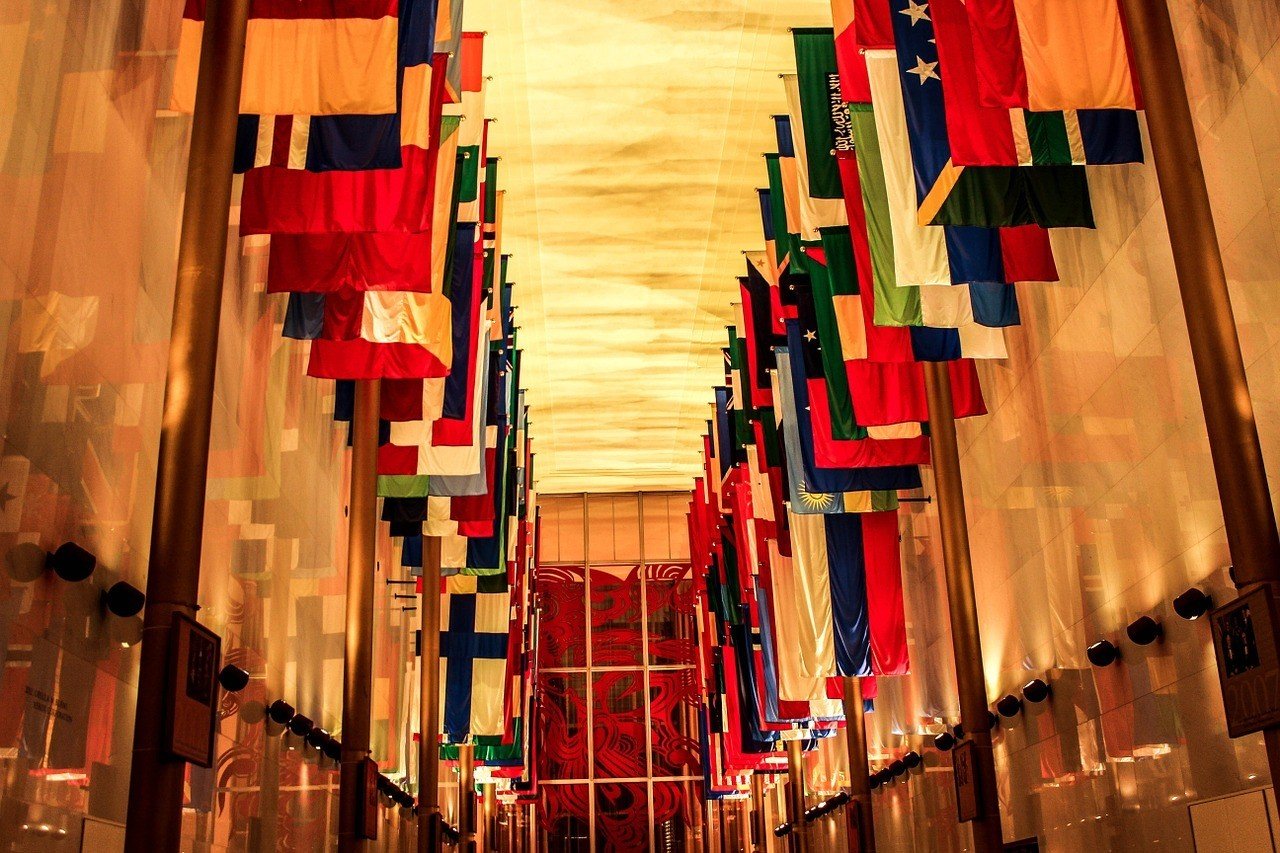
10. Make a Trip to Old Town Alexandria
One of the best places to visit near Washington DC is Alexandria. This historically, preserved commune is a great day trip and a great way to escape the hecticness of the nation’s capital.
Hotels in Washington DC are the most expensive form of accommodation and can cost quite a pretty penny. On the bright side, Washington DC hostels are among the best in the country and will help you cut your daily budget.
Staying in an Airbnb is a much better choice than hotels in DC (as is usually the case). Airbnb apartments are cheaper, more interesting, and often far more personable than hotels.
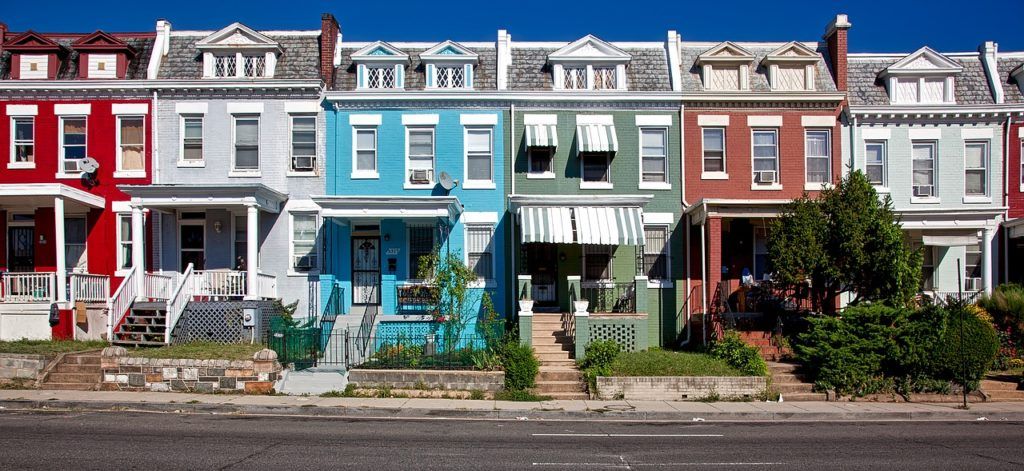
If you really want to visit Washington DC like a Broke Backpacker, then consider urban camping! . Camping does require some extra thought. For example, you’ll need to bring your own tent with you and a stove for cooking as well.
The Best Places to Stay in Washington DC
Here’s exactly where to stay in Washington DC based on your travel style:
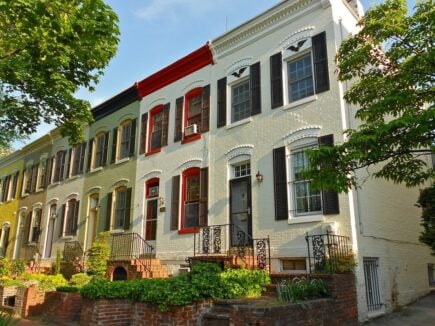
Foggy Bottom
Located in the city’s West End, Foggy Bottom is our recommendation for where to stay if you’re visiting Washington DC for the first time.
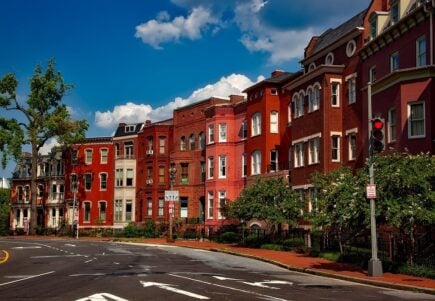
Logan Circle
For travellers on a budget, there’s no better place to stay than Logan Circle. This charming and historic neighbourhood is where you’ll find a great selection of budget hostels and boutique hotels to fit any budget.
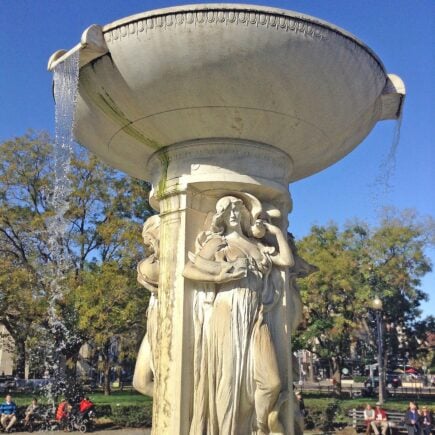
Dupont Circle
Dupont Circle is a trendy and historic neighbourhood where you’ll find the best bars, pubs, nightclubs and dancehalls, as well as restaurants, galleries, and shops in DC.
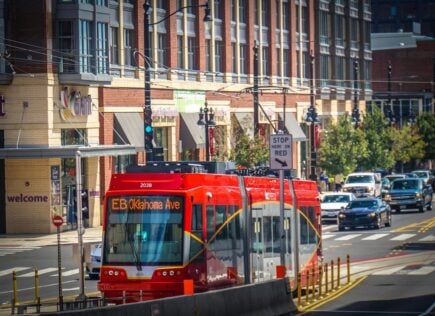
H Street Corridor
Culture vultures, fearless foodies and trendsetting travellers won’t want to miss the H Street Corridor. What was once one of the city’s most shattered area, the H Street Corridor is now one of the hippest and most happening parts of town.
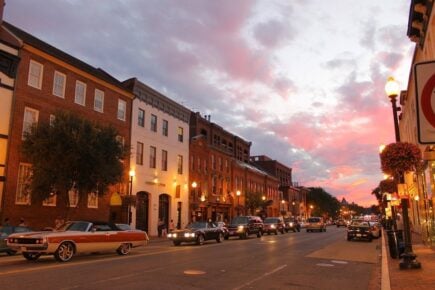
Georgetown
Georgetown is one of Washington DC’s most prestigious and upscale areas. The oldest part of the city, Georgetown is famous for its narrow cobblestone streets that are lined with tall, leafy trees and spectacular historic homes.
Washington DC Budget Accommodation Hacks
Sometimes you need your own roof above your head – we know the feeling. Other times, you’re doing everything you can save a nickel and dime.
If you’re trying to cut the costs of travel to Washington DC, then maybe it’s time to stay somewhere besides a hostel or apartment. If you need to save money, try one of these:
- Couchsurf! – Couchsurfing is the best way to save on cash when it comes to accommodation since most of the time you’re crashing for free. Staying with a local host is also a great chance to experience a more authentic side of the city and to visit hidden Washington DC.
- Tap into your backpacker network – You never know when you have a friend in a foreign city! If you’ve traveled a lot, you may have met someone from Washington DC or know someone who knows someone.
- Camping – Urban camping is a growing trend in many cities. These campsites are comfortable, sociable, safe, and cheap. They are often located on the outskirts of town, which means they are quieter too. Research to see if Washington DC has any and be sure to bring a good backpacking tent!
Washington DC is quickly becoming one of the most expensive cities in the USA. While it isn’t yet on par with the monsters like San Francisco, New York, or Boston, it’s still pricey enough to warrant some concern.
A lower daily budget for Washington DC will be around $60-$80. This will get you a dorm bed, groceries, bus tickets, and some extra spending money.
Accommodation in Washington DC is what you’d expect from a typical American city – expensive, with hotels being the most and hostels in Washington being the least. Airbnb apartments are decently priced but are far from being convincingly affordable.
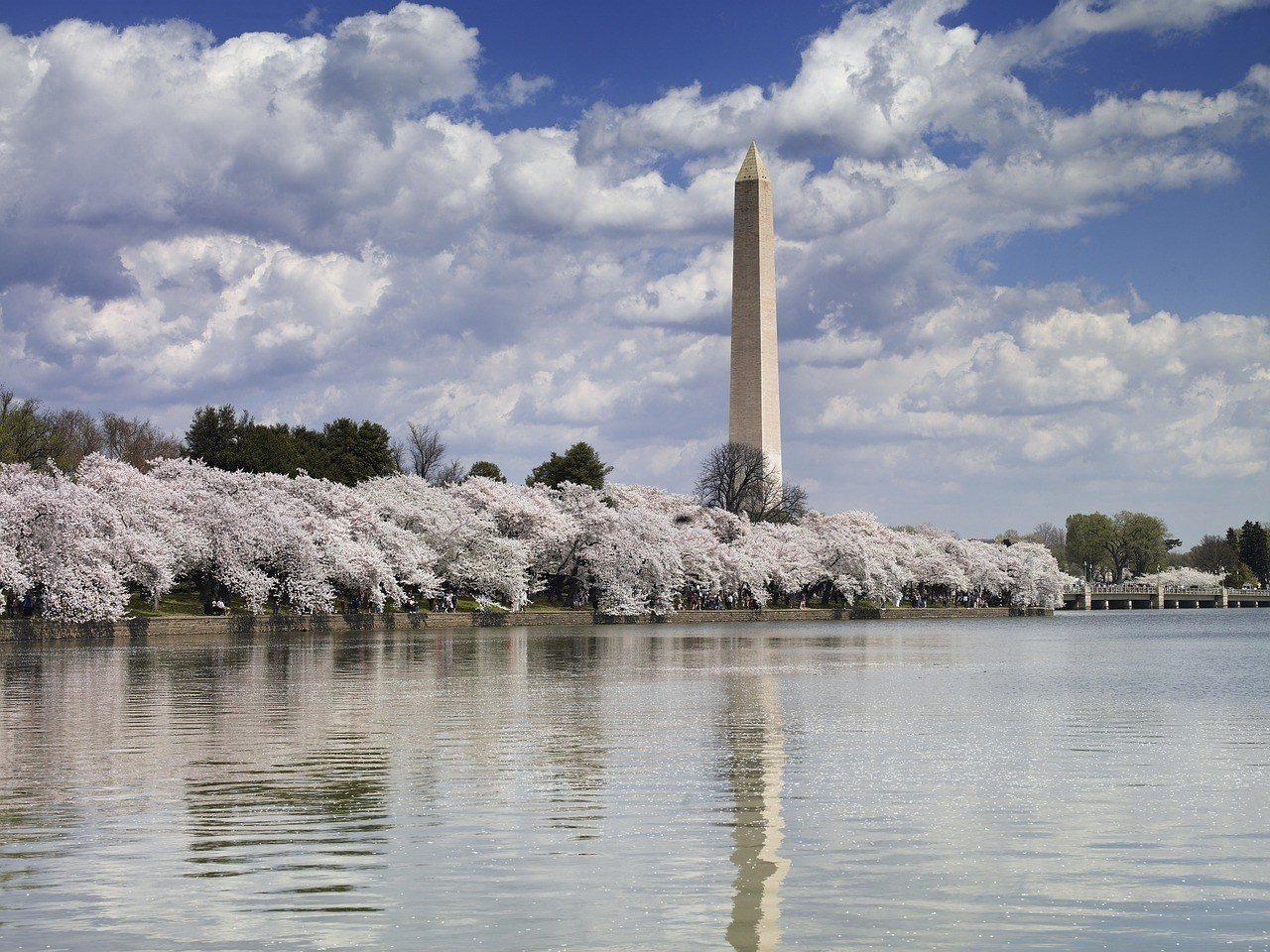
Even though groceries are a little pricier than usual in Washington DC, eating out is definitely way more expensive. While this DC does offer some of the best and most diverse restaurants on the American East Coast, they will put your wallet into a swift and early grave. Be picky about if and when you go to a restaurant in this town.
Those visiting Washington DC shouldn’t worry too much about transportation costs since they’ll, most likely, be walking around a lot. When one does need to use the bus or subway, tickets are very reasonably priced.
Washington DC is a very seasonal town and prices can fluctuate widely throughout the year. Be very mindful of when you plan on visiting as timing can make or break your bank accounts.
A Daily Budget in Washington DC
Below is a breakdown of a daily budget in Washington DC including average costs of each expense.
| Expense | Broke Backpacker | Frugal Traveller | Creature of Comfort |
|---|---|---|---|
| Accommodation | $0-$30 | $30-$120 | $120+ |
| Food | $10-$15 | $15-$25 | $25+ |
| Transport | $0-$5 | $5-$15 | $15+ |
| Nightlife | $0-$10 | $10-$30 | $30+ |
| Activities | $0-$10 | $10-$25 | $25+ |
| Total: | $10-$70 | $70-$215 | $215+ |
A Few Free Things to Do in Washington DC
While DC isn’t the most wallet-friendly city out there, there are still plenty of free things to do! Washington DC has so many amazing shows, national museums, and public art galleries and many of these cost absolutely nothing. Take advantage of these, amigos, and you’ll find that Washington DC can be much cheaper to visit.
- Performances – There are all kinds of free performances in Washington DC! The Kennedy Center hosts free concerts on a nightly basis but tickets for these run out very fast. Spread throughout the year are several free public concerts as well. Grab a picnic blanket and chill out on the lawn at one of these.
- Museums – Not gonna lie, I was overwhelmed by the sheer amount of free museums Washington DC has. Never before have I seen a city offer such an amazing assortment of curations and all for free. Superlative institutions like the National Air and Space Museum, Natural History Museum, National Archives, and Library of Congress cost nothing at all!
- More museums – But wait; there’s more! The list of free museums in Washington DC doesn’t end there. The National Museum of African American History and Culture, the United States Holocaust Memorial Museum, and the Museum of the American Indian, and the National Museum of African American History and Culture are all pro bono as well!
- And galleries – Let’s not forget the many a gratis galleries in DC. The National Gallery of Art, Renwick Gallery, National Portrait Gallery, and Arthur M Sackler Gallery are all, you guessed it, free to enter!
So a good rule of thumb is that most of Washington DC’s public museums and galleries charge nothing to enter, unless stated otherwise. That being said, consider making a donation to the museums at the end of your visit.
Washington DC Travel Guide Budget Tips
To help you save a little extra cash, we’ve compiled a list of top tips for traveling to Washington DC on a budget. Some of them are pretty nifty while others are just common sense – all will be helpful. Remember: Washington DC can be cheap but only with the right spending habits!fwashington d.c
- MyTIX – many free shows at the Kennedy Center, then there is still hope. The MyTIX program offers discounted rates to different age groups and is meant to give people an extra opportunity. If you’re under 30 years old, a student, or military you can get cheap tickets to a show!
- Use local markets – DC is full of farmers markets and food halls. These sell superior ingredients and often for a great price too! Choose these over ridiculously priced chains like Whole Foods.
- Get away from the touristy areas – The prices will absolutely be higher in DC’s City Center. (Duh, the tourists are all there.) Get outside the central districts to the likes of Columbia Heights and H Street to find better prices. The cheapest places to eat in Washington DC will be on the fringes of the city as well.
- Take advantage of happy hour – Happy hour is everyone’s favorite time of day! From around 4-6 pm and sometimes late, lots of bars and restaurants have special drink/food prices. Go out during these times to find all the cheap things to do in Washington DC.
- Use a water bottle – Save money by investing in a good water bottle and then drink from the tap. Washington DC’s water is delicious and totally fine to drink.
- Walk! – It’s costs nothing and DC is small enough to see on foot.
Why You Should Travel to Washington DC With a Water Bottle
Washington D.C isn’t immune from the plastic problem, so do your part and keep the Big Blue beautiful.
You aren’t going to save the world overnight, but you might as well be part of the solution and not the problem. When you travel to some of the world’s most remote places, you come to realize the full extent of the plastic problem. And I hope you become more inspired to continue being a responsible traveler.
Plus, now you won’t be buying overpriced bottles of water from the supermarkets either! Travel with a filtered water bottle instead and never waste a cent nor a turtle’s life again.
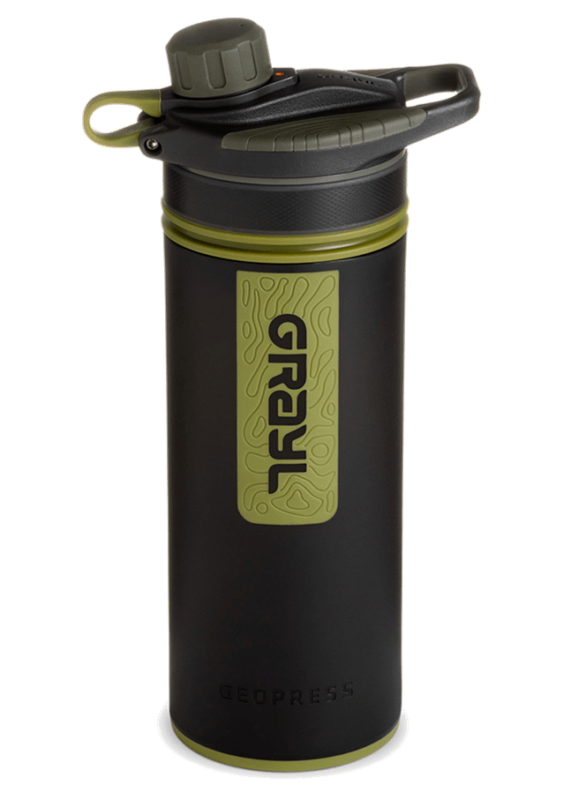
Drink water from ANYWHERE. The Grayl Geopress is the worlds leading filtered water bottle protecting you from all manner of waterborne nasties.
Single-use plastic bottles are a MASSIVE threat to marine life. Be a part of the solution and travel with a filter water bottle. Save money and the environment!
We’ve tested the Geopress rigorously from the icy heights of Pakistan to the tropical jungles of Bali, and can confirm: it’s the best water bottle you’ll ever buy!
View on REI Read the ReviewBest Time to Visit Washington DC
Washington DC is a bit of an odd duck when it comes to peak seasons. Unlike other American cities that peak in the summer and taper off in the spring and autumn, DC is, at times, quite the opposite. In order to visit Washington DC on the cheap, you’ll need to plan accordingly and to choose the right time of year.
Let’s start off by saying that spring is arguably the best time of year to visit Washington DC, but it’s also the most expensive. During this time, temps are comfortable, the weather is cooperative, and the cherry trees are bursting with color.
Everyone and their grandma apparently knows this though and decides to visit around April and May. The streets will be crowded with tourists, school children, and students. On that note, hotels will also be very limited i.e. pricey.
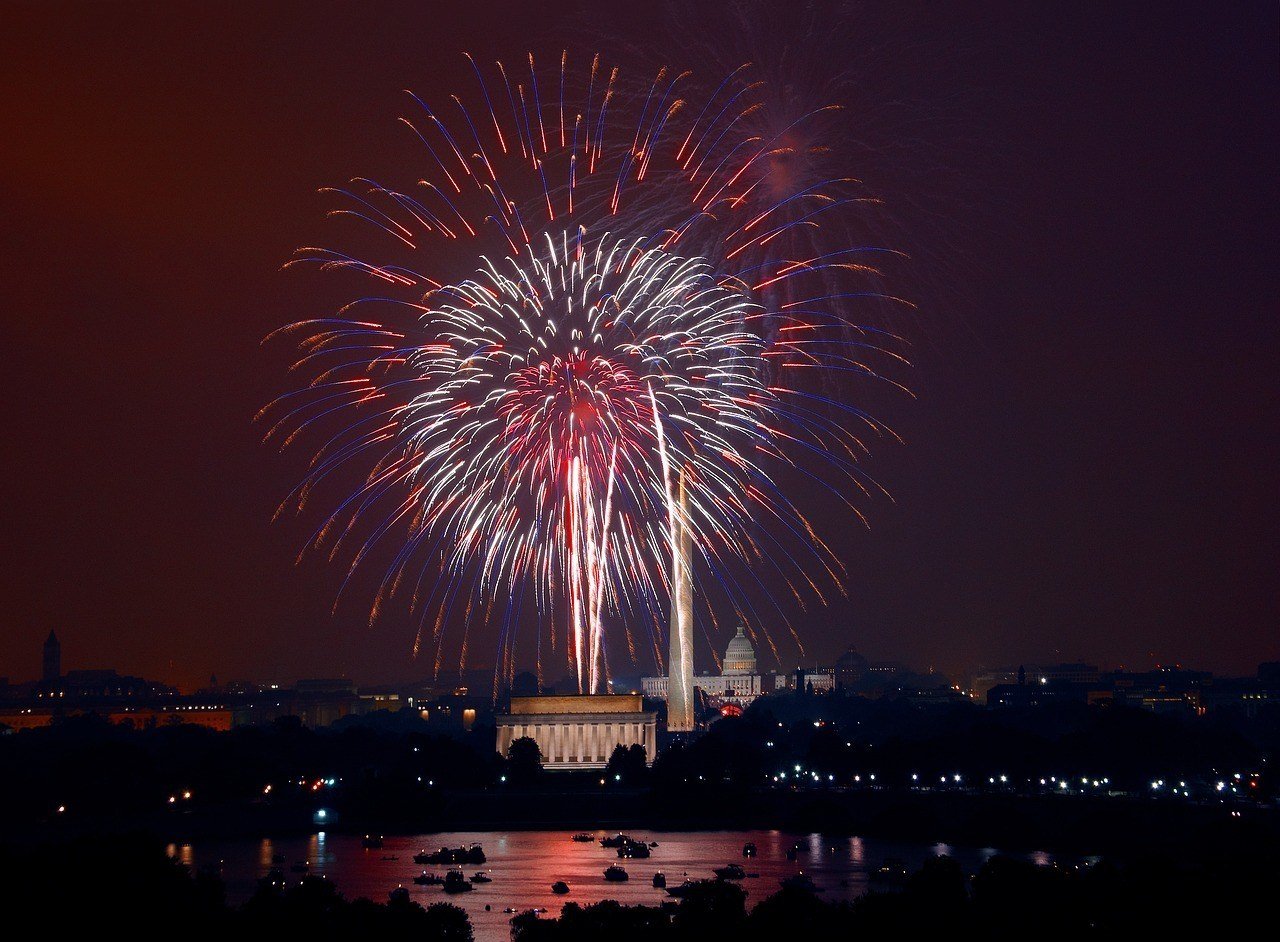
Summer in DC gets a bad rap for being oppressively hot and humid. While this is certainly not ideal, it’s still nothing compared to some tropical destinations that we’ve visited before. If you can bear the heat, then visiting on the 4th of July can be an epic weekend in Washington DC.
Fall is probably a local’s favorite time of the year. Temperatures remain pleasant, the foliage begins to change, and the tourist hordes begin to diminish. Some of the best American holidays are coming up too, like Labor Day, Halloween, and Thanksgiving; that last one, in particular, is quite special in Washington DC.
Winters mean cold weather and empty museums. If you don’t mind the occasional cold snap or freezing rain, then visiting during this time could be well worth the price cuts, especially if you are visiting for the inside attractions.
What to Pack for Washington DC
What you bring to Washington DC will largely depend on the season you visit in. Even so, here are a few things you shouldn’t travel without regardless of when you visit:
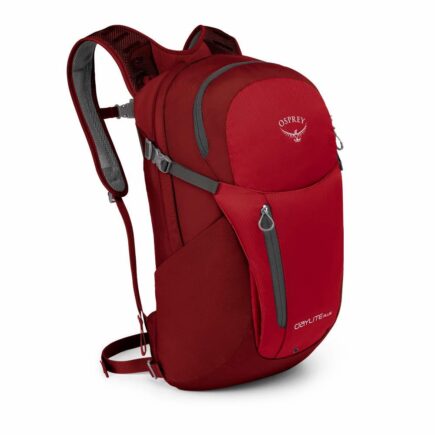
Osprey Daylite Plus
Any city slicker needs a SLICK daypack. In general, you can never go wrong with an Osprey pack, but with its array of awesome organisation, durable materials, and a comfy build, the Daylite Plus will make your urban jaunts buttery smooth.
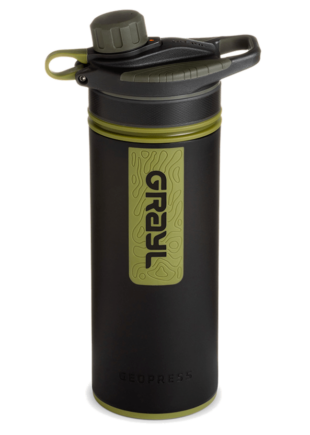
Grayl Geopress Filtered Bottle
Save $$$, save the planet, and save yourself the headache (or tummy ache). Instead of sticking to bottled plastic, buy a Grayl Geopress, drink water no matter the source, and be happy knowing the turtles and fishies thank you (and so do we!). 🙂
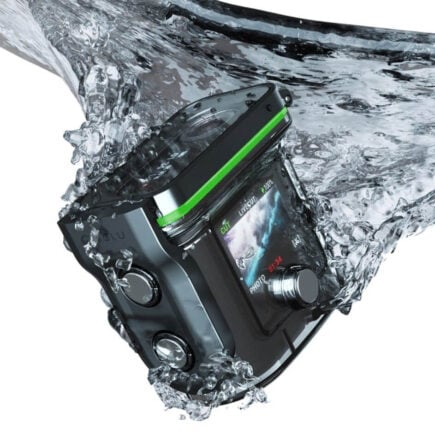
OCLU Action Camera
Wait, it’s cheaper than a GoPro and… better than a GoPro? The OCLU action cam is the cam for budget backpackers that want to immortalise all their wildest adventures – including that time you dropped it off a Himalayan mountain – WITHOUT breaking the bank.

Solgaard Solarbank
Resourceful travellers know how to find power outlets anywhere on the road; smart travellers just pack a solar power bank instead. With 4-5 phone cycles per charge and the ability to top up literally anywhere the sun is shining, there’s no reason to ever get lost again!
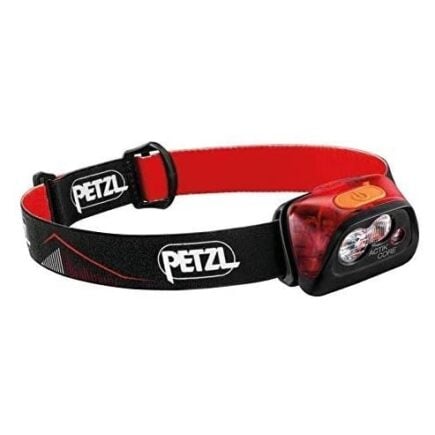
Petzl Actik Core Headlamp
ALL travellers need a headtorch – no exceptions! Even in the hostel dorm, this beauty can save you in a real pinch. If you haven’t got in on the headtorch game, DO. I promise you: you’ll never look back. Or at least if you do, you’ll be able to see what you’re looking at.
Staying Safe in Washington DC
If you were raised in the USA during the 80s or 90s, then you may have a very different impression of your federal capital. Up until the end of the 20th century, Washington DC had one of the worst violent crime rates in the entire country and even earned the title of “murder capital of the USA.” And we’re not even counting the actual wars that happened here.
At some point in the recent past though, Washington DC cleaned up its act. The city was one of the first and most aggressive practitioners of urban redevelopment. While this has included rampant gentrification, which has its own consequences, DC is, overall, a safe US city.
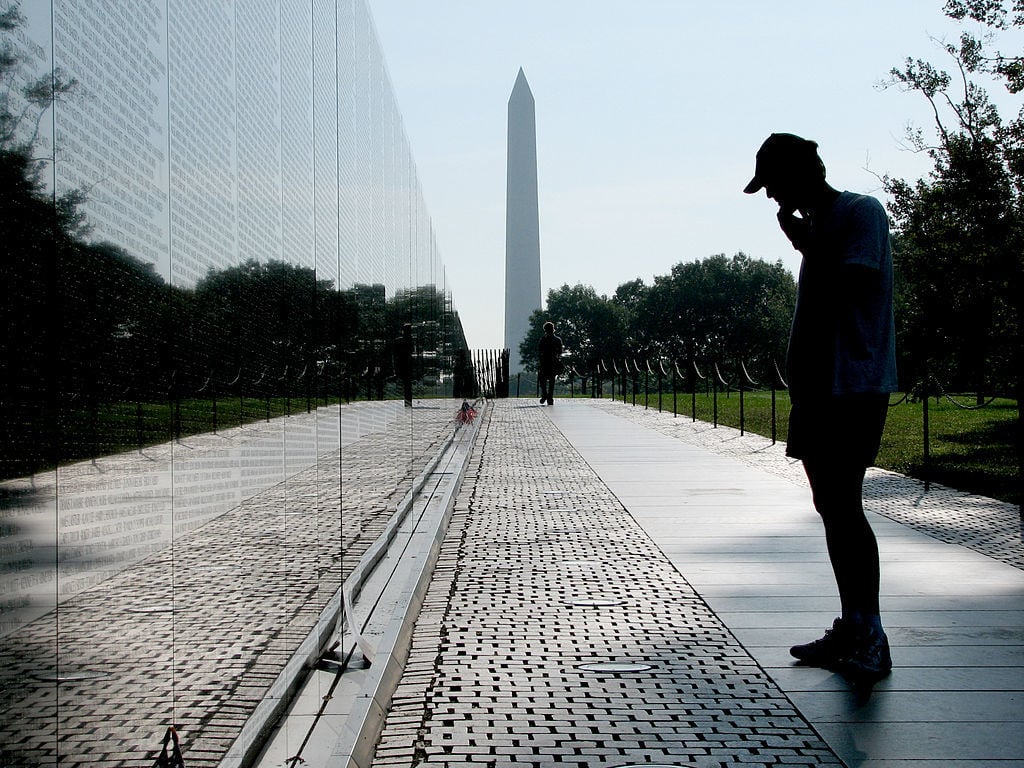
Photo: Hu Totya (WikiCommons)
Violent crimes, including murder and rape, are down all across the board. What incidents do still occur usually happen on the far outskirts of the city. Most of these are shared with the public and are tracked via a handy online tool.
Like most other large cities, muggings and pickpocketings are still common in DC. Be careful of your personal belongings and of yourself at night and in crowded places, especially in the busy nightlife districts. Remember: drunks are easy targets.
Exhibit all of the usual travel safety practices that you would in any other country and you’ll be just fine.
Sex, Drugs and Rock ‘n’ Roll in Washington DC
Washington D.C. isn’t the craziest place in the USA, but good times are certainly still to be had in The District. The most likely drugs you’ll find are the two most common of course: alcohol and weed. Weed is legal in D.C., but its a bit of a grey area.
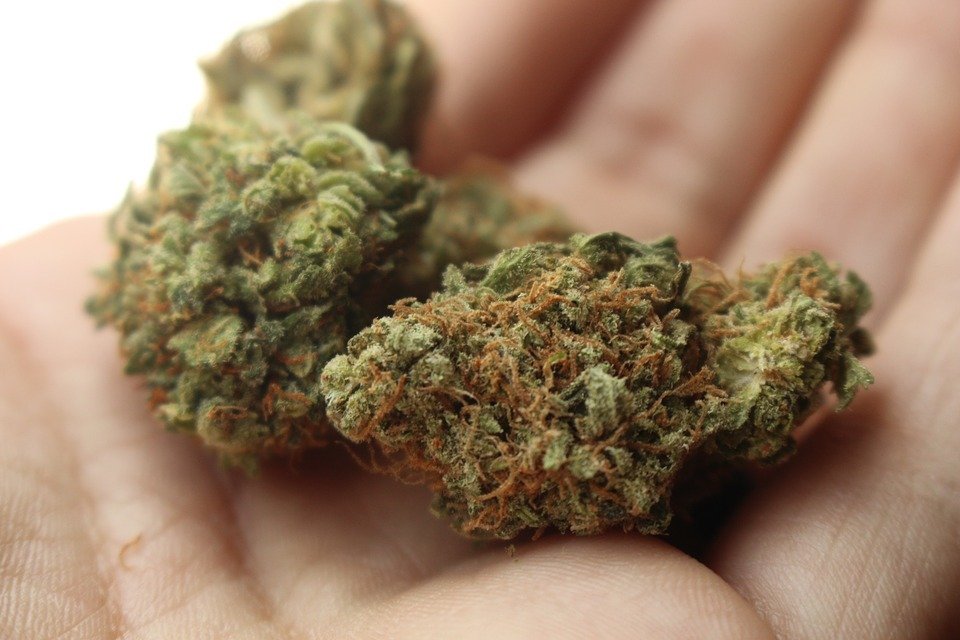
There are numerous gifted “delivery services” for recreational purchases, as well as a few medical dispensaries in the city. As of June 2022, anyone 21 and older can now buy from the medical stores without a doctor’s note. This is a significant change meant to fight back against the “gifting industry.”
As for alcohol, you’ll find bars all over the city that also only serve travelers 21 and over. As for other drugs, you can certainly find them with the right connections. Though beware of the very real risks of fentanyl poisoning, which is a major current issue in the country.
Getting Insured BEFORE Traveling to Washington DC
Even if you are only going on a short trip to DC, you should always travel with insurance. Have fun on your backpacking adventure, but please do get insurance – take it from someone who has racked up tens of thousands of bucks on an insurance claim before, you need it.
ALWAYS sort out your backpacker insurance before your trip. There’s plenty to choose from in that department, but a good place to start is Safety Wing.
They offer month-to-month payments, no lock-in contracts, and require absolutely no itineraries: that’s the exact kind of insurance long-term travellers and digital nomads need.
SafetyWing is cheap, easy, and admin-free: just sign up lickety-split so you can get back to it!
Click the button below to learn more about SafetyWing’s setup or read our insider review for the full tasty scoop.
How to Get Into and Around Washington DC
There are two major airports in the direct vicinity of Washington DC: Dulles International Airport and Ronald Reagan National Airport. The former handles the grand majority of the international traffic while the latter just does domestic.
Both offer public transport to the city center, though Ronald Reagan is far more convenient since it’s much closer to DC. Expect to spend 1-1.5 hours on a combination of buses and trains from Dulles, and 30 minutes from Reagan via the metro. The Silver Line Express bus provides quick and easy transportation from Dulles to the Metrorail, which is the cheapest way to reach D.C.
Flying into Baltimore is also a viable option since the city is less than an hour away. In fact, the commute from Baltimore can actually be shorter than Dulles if you take the local MARC train. Rates for public transport are about the same.
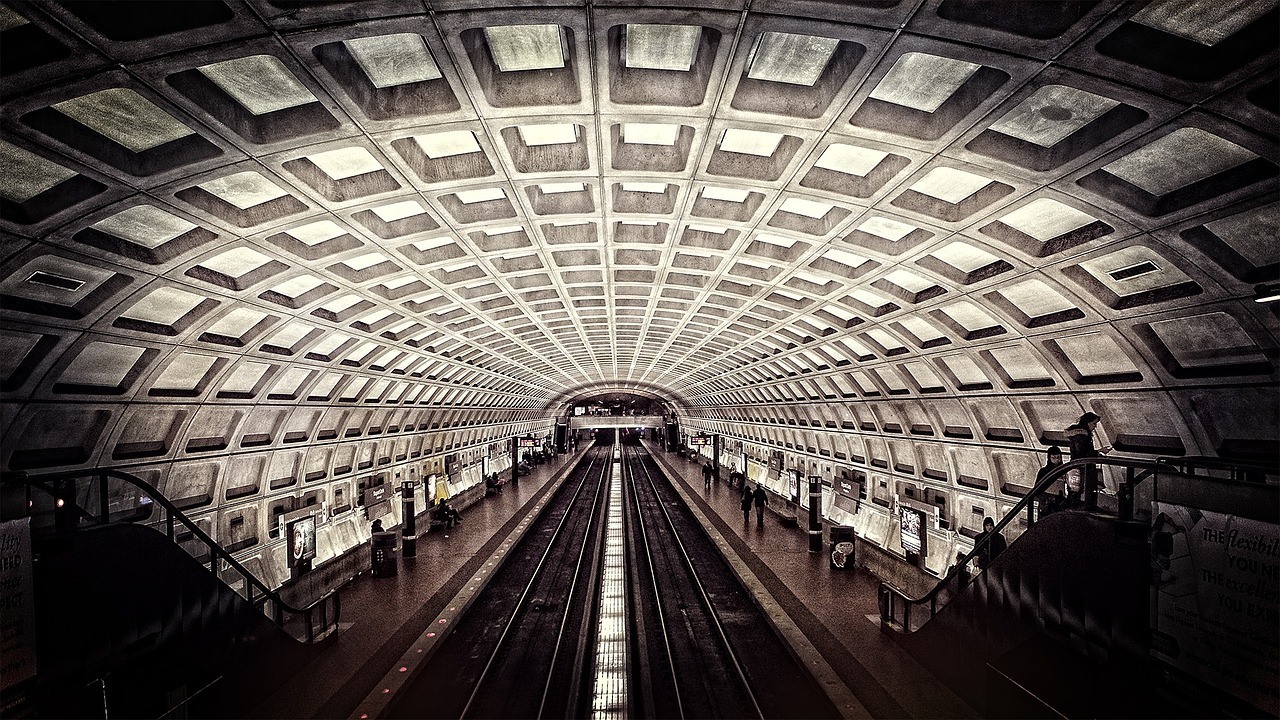
Washington DC is connected to much of the rest of the Eastern USA via long-distance trains and buses. With Amtrak or Greyhound, you can travel just about anywhere, from Boston to Chicago and the Midwest. Trains arrive into DC’s Union Station where you can then transit to other forms of public transit or call an Uber.
Note that train travel in America is a bit of luxury so tickets will be exponentially more expensive than using the bus.
If the thought of using a Greyhound scares you (those buses do get weird sometimes), then, don’t worry, there are plenty of more options. Check out local companies like BoltBus, Mega Bus, and Peter Pan as alternatives.
If you have a car and are road tripping to the city, just park on the outskirts and take the metro in. Parking in DC is a nightmare.
Getting Around Washington DC
Washington DC was quite literally designed to be experienced on foot. The city’s layout is such that nearly every major monument can be seen from one another and most all of them are within walking distance.
I definitely recommend investing in a good pair of trainers while planning a trip to Washington DC. God knows you’re going to be using them every day, all day until you can’t walk anymore. If you need to be close to the Washington Convention Center, you’re going to have to stay in Logan Circle or somewhere near.
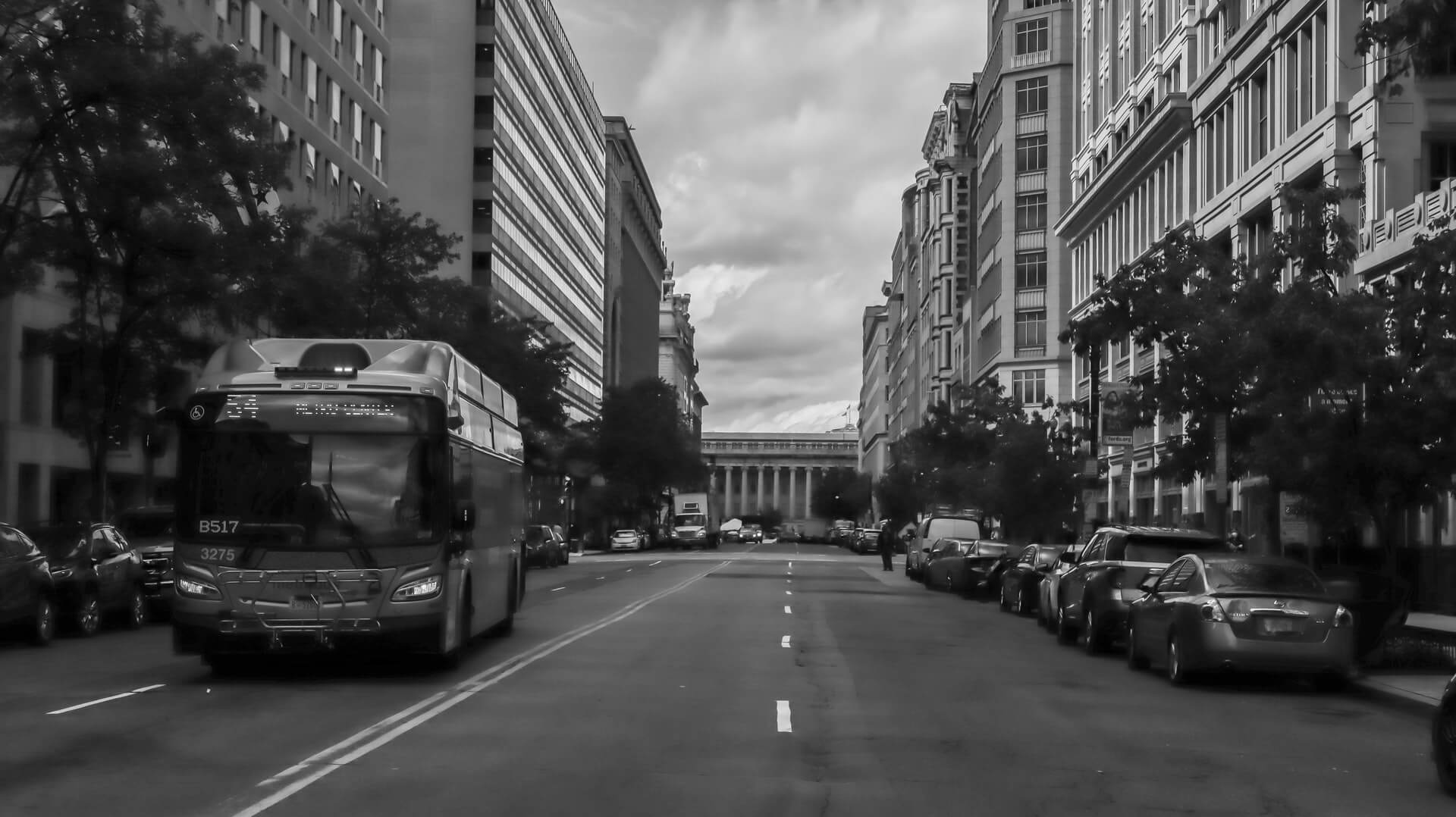
On that note, biking is also a very convenient way of getting around the city. Most of Washington DC’s points of interest are all located on flat land and there are plenty of dedicated bike lanes in between.
If you can’t muster the strength to walk or ride anymore, there’s plenty of good public transport in the city. You can buy a SmarTrip card ($2.00 initial purchase) and use it on the subway and most of the public buses.
There’s a great tourist bus (Circulator) that hits up all of the central attractions in Washington DC and it only costs $1 per ride. All other Metrobuses should cost $2.00 unless otherwise noted.
Washington DC has a subway called the Metrorail that is quick and efficient. Fairs are based upon the time of day you are riding and how far you are going. Expect to pay anywhere from $2.25-$6.00 per trip.
If you’d like, you can buy a Metropass, which will enable unlimited rides for a set period of time. Rates per pass will obviously vary.
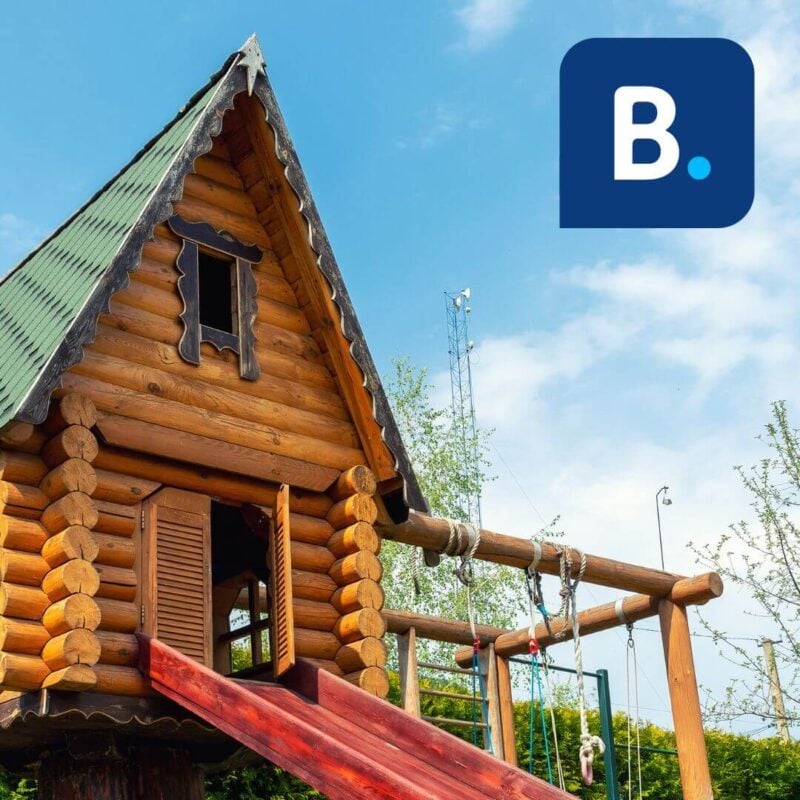
Get 15% OFF when you book through our link — and support the site you love so dearly 😉
Booking.com is quickly becoming our go-to for accommodation. From cheap hostels to stylish homestays and nice hotels, they’ve got it all!
View on Booking.comWorking and Volunteering in Washington DC
Like most places in the US, working in Washington D.C. is going to be almost impossible if you’re not a US citizen or permanent resident. You would otherwise need a work visa, which is notoriously difficult to obtain. It’s certainly possible to live the digital nomad life in the Capitol, though it will be pricey to spend a significant amount of time in this city.
Good news: Volunteering in Washington IS possible, though I highly recommend you go through a reputable company like Worldpackers.
Worldpackers connects travelers with meaningful volunteer experiences all over the world in exchange for room and board! It’s transparent and review-based, so you’ll know exactly what you’re getting into before you arrive.
Nightlife in Washington DC
Let me tell you – politicians party fucking hard. Some are out almost every night mingling and drinking their stresses away. The nightlife of Washington DC is surprisingly strong and there are lot of different places you can go in this town.
That being said, drinking in Washington DC can be very expensive. According to a friend of mine, it’s a crazy lifestyle (living in Washington DC) and your savings can quickly run out.
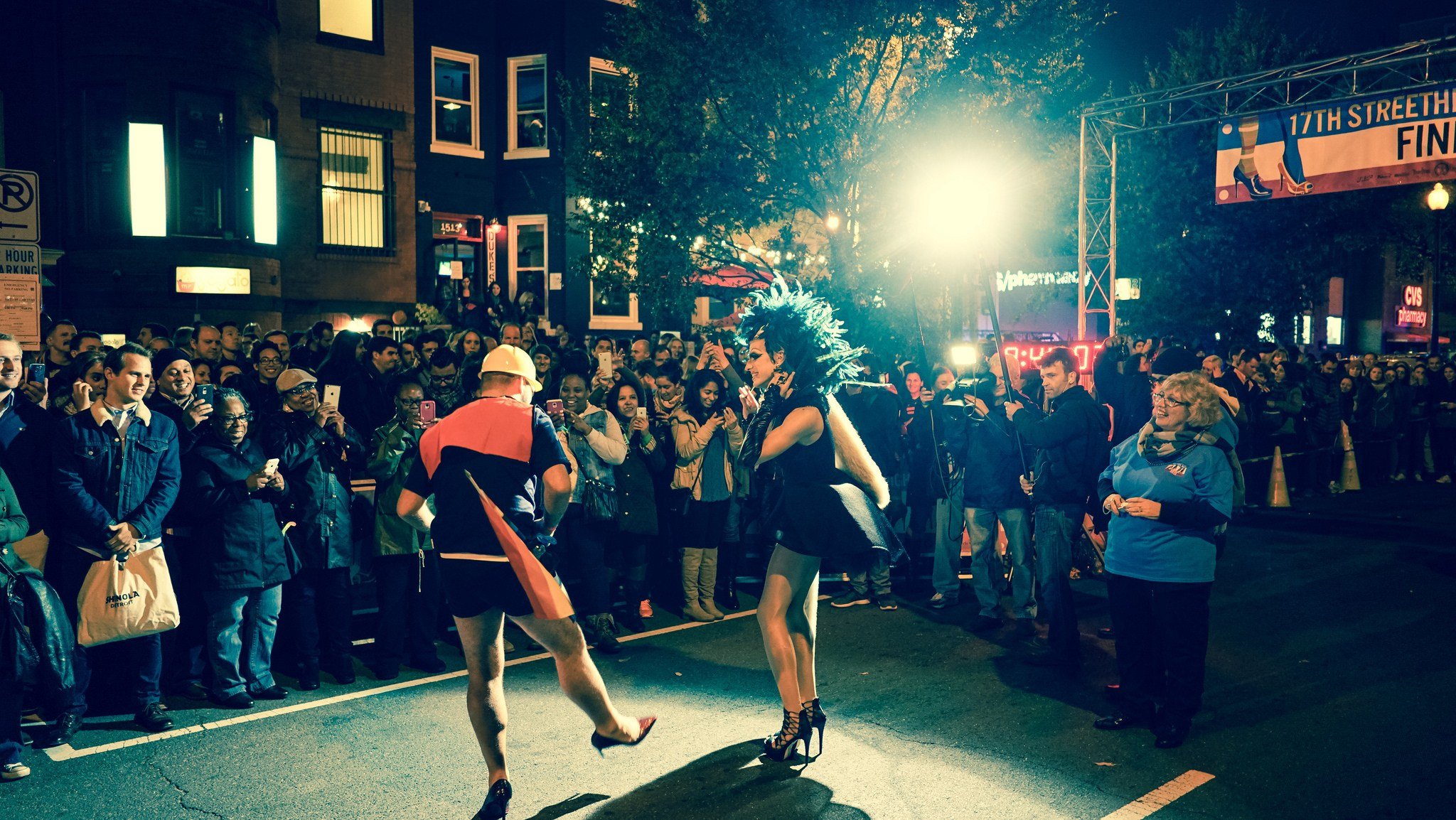
Photo: Ted Eytan (Flickr)
The most popular nightlife areas in Washington DC are Adams Morgan, The Shaw, and 14th Street/Logan Circle. These areas are in-vogue, growing at an alarming rate, and are showing no signs of stopping.
- Adams Morgan – A once seedy area was frequented by Tom Cruise and other military lawyers. Now that it’s been redeveloped, it’s still seedy but in that dirty-safe kinda way.
- The Shaw – The trendy area, where people sip coffee by day, tapas and wine in the evening, and cocktails at night. Think RiNo in Denver or Mississippi Street in Portland.
- Logan Circle – All of the above and a whole lot more.
In actuality, these districts are kind of newcomers – being the recipients of recent urban renewal and all – and have usurped the former kingpin of DC’s nightlife, Dupont Circle. Dupont Circle still has a lot going for it – there are plenty of dance clubs and, in particular, gay bars – but it’s not what it used to be.
Georgetown has a decent nightlife, though it’s pretty upscale, even by DC standards. On the cusp of being “discovered,” H-Street is currently going through the hipster phase and has plenty of lowkey bars around.
Dining in Washington DC
It’s only fair that the capital of one of the most cosmopolitan nations in the world as an equally cosmopolitan culinary landscape itself. There is a huge of array of foods on offer in DC, from Asian to Africa to even Georgian (the country, not the state); you can find everything and then some in this city.
Like everything else in DC, dining out can be expensive. Tables fill up quickly too, as everyone appears to be trying to impress some sort of in law or foreign dignitary at the next “hot spot.”
Basically, you’ll need to choose a couple of restaurants that you have to go to, make reservations, and then eat street food or at home the rest of the time.
Here are some of our favorite restaurants in Washington DC to get you started:
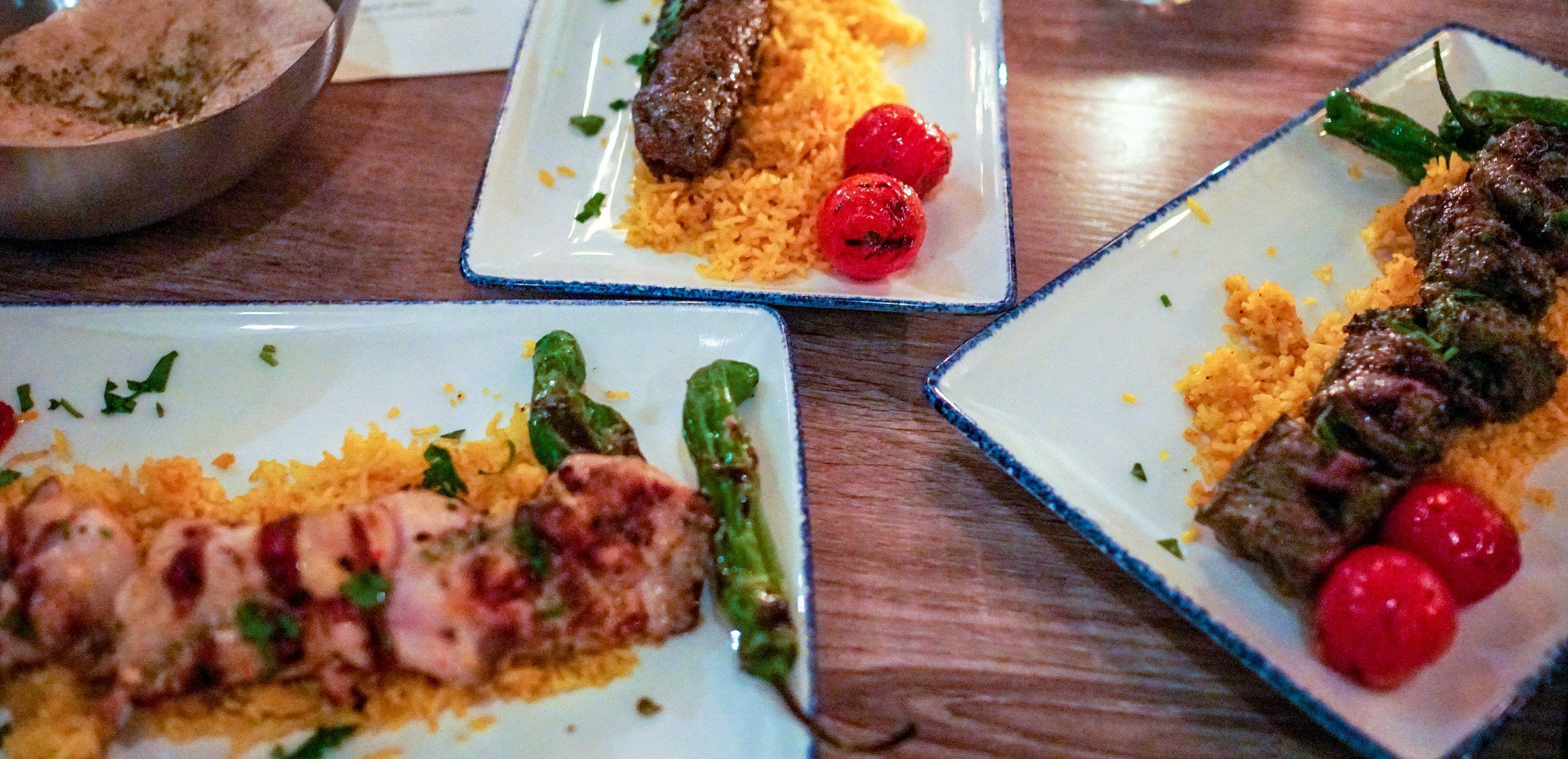
Photo: Ted Eytan (Flickr)
- Compass Rose – Holy shit, these guys have khachapuri! It’s a Georgian dish involving a bread boat, cheese, and then a lot more cheese. It’s unhealthy but divine. Make sure you get a raw egg cracked in yours.
- Ben’s Chili Bowl – Probably the most well-known entity in DC after the President. Grab a (delicious) half-smoke sausage so you can say you went there.
- Oohh’s & Aahh’s – A staple of the DC take-out scene and probably a Broke Backpacker’s best friend. Be sure to get the mumbo sauce – a local delicacy that is sweet and tangy.
- Perry’s Restaurant – One of the better sushi spots in town. Nice rooftop too.
- Chercher Ethiopian Restaurant – DC has an enormous Ethiopian population and they have contributed amazingly to the city’s cuisine. This will be some of the best you get this side of the Atlantic.
- Toki Underground – One of those places that gets huge hype and even bigger lineups. Worth it if you like ramen though.
Cheap Eats in Washington DC
Check out these places if you want to dine in DC on a budget:
- Horace and Dickies: Absolutely MASSIVE portions of fried sea and soul food for great prices.
- The Well Dressed Burrito: Enjoy huge burritos packed with plenty of meat at this much-loved Mexican spot where you can get a meal for less than $10.
- Ben’s Chili Bowl: This famous DC staple is known for its original half smoke and is less than $7.
- Stellina Pizzeria: Have some of the best pizza in the city for unbeatable prices. They also have unique Italian street foods available.
- Bayou Bakery: You’ll have to head to Arlington for this one, but it’s absolutely one of the best bakeries in the DC area. They also serve affordable sandwich and breakfast options.
- Good Stuff Eatery: Delicious, homemade burgers and shakes for less are served up here. They have a wide variety of unique flavors too.
How to Get Off the Beaten Path in Washington DC
As you’ve probably seen throughout this entire Washington DC travel guide, this is a city where the major tourist spots are genuinely awesome and worth seeing.
But even so, there are still a ton of ways to get off the beaten path while traveling in The District. Here are some of my faves:
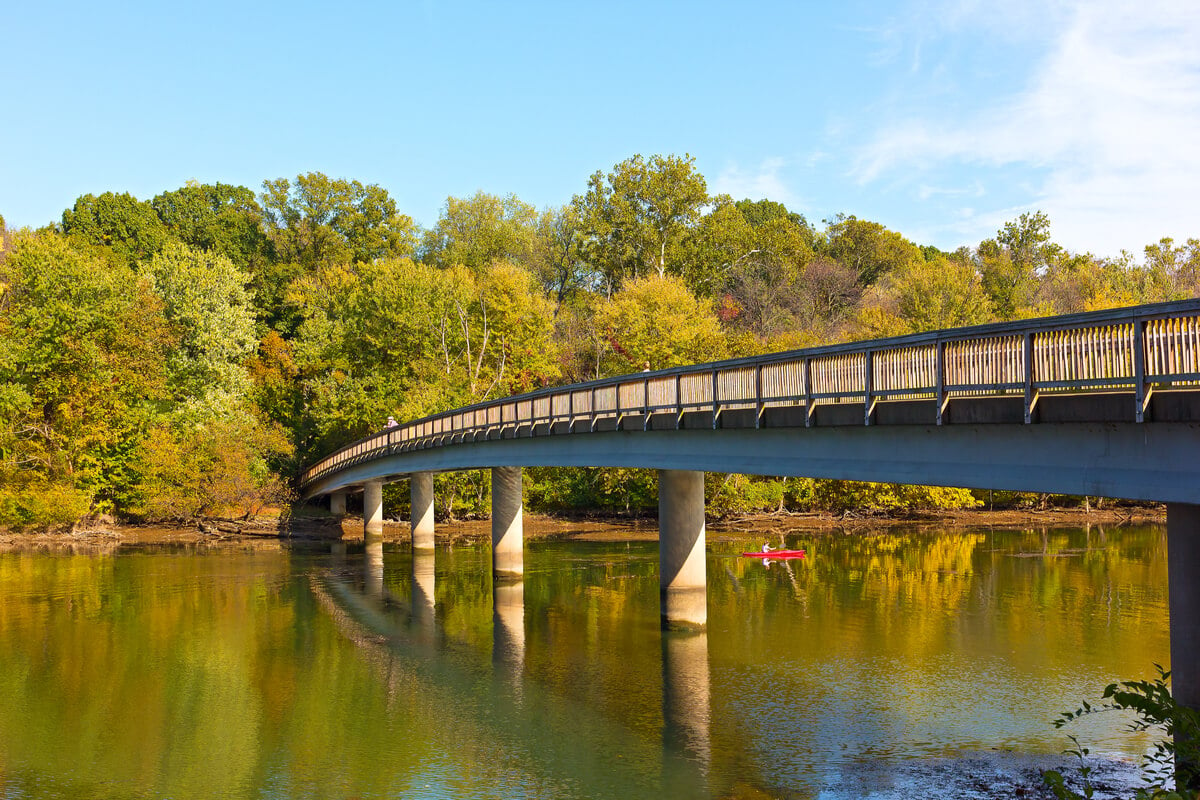
- Tregaron Conservatory: This peaceful estate is now a national landmark covering more than 20 acres. Filled with plants and walking trails, it’s the perfect place to escape the city. The best part: it’s off most tourists’ itineraries.
- Theodore Roosevelt Island: A pedestrian-only island (not even cycles are allowed) in the middle of the Potomac River. Enjoy various nature walks, forests, and views.
- Pentagon: To visit the Pentagon on a guided tour, you’ll need to fill out an application about 2 weeks in advance unless you know someone that works there. Although an extra step is involved, it’s totally worth it for such a unique experience.
- President Lincoln’s Cottage: Located in Northwest DC, this 250-acre property is where Abraham Lincoln made many of his most influential decisions. Go on a tour of the home to learn more intricate details!
- Maine Avenue Fish Market: Spend some time at the oldest continuously operating fish market in the United States. It’s open seven days a week but has the most variety on weekends.
FAQs About Traveling to Washington DC
Here are just a few more things you should know before you got to Washington D.C.:

Our GREATEST Travel Secrets…
Pop your email here & get the original Broke Backpacker Bible for FREE.
Final Advice Before Visiting Washington DC
And we’ve finally made it to the end of this Washington DC travel guide! I hope you’re feeling just a bit more prepared for your trip, and more importantly, that you’re excited to experience all the nation’s capital has to offer!
I really encourage you to dig into your inner history buff while in town. There really is no better place in the entire USA to learn. You’ll soon know what I mean when you check out the numerous world-class museums it has to offer.
In addition to all its impressive sights, Washington DC is just easy. Easy to like, easy to get around, and clean! It’s a model city, and being the home of politicians, its truly unlike any other.
So clear up a weekend (or longer), book your accommodation, and fully immerse yourself into an epic Washington experience.
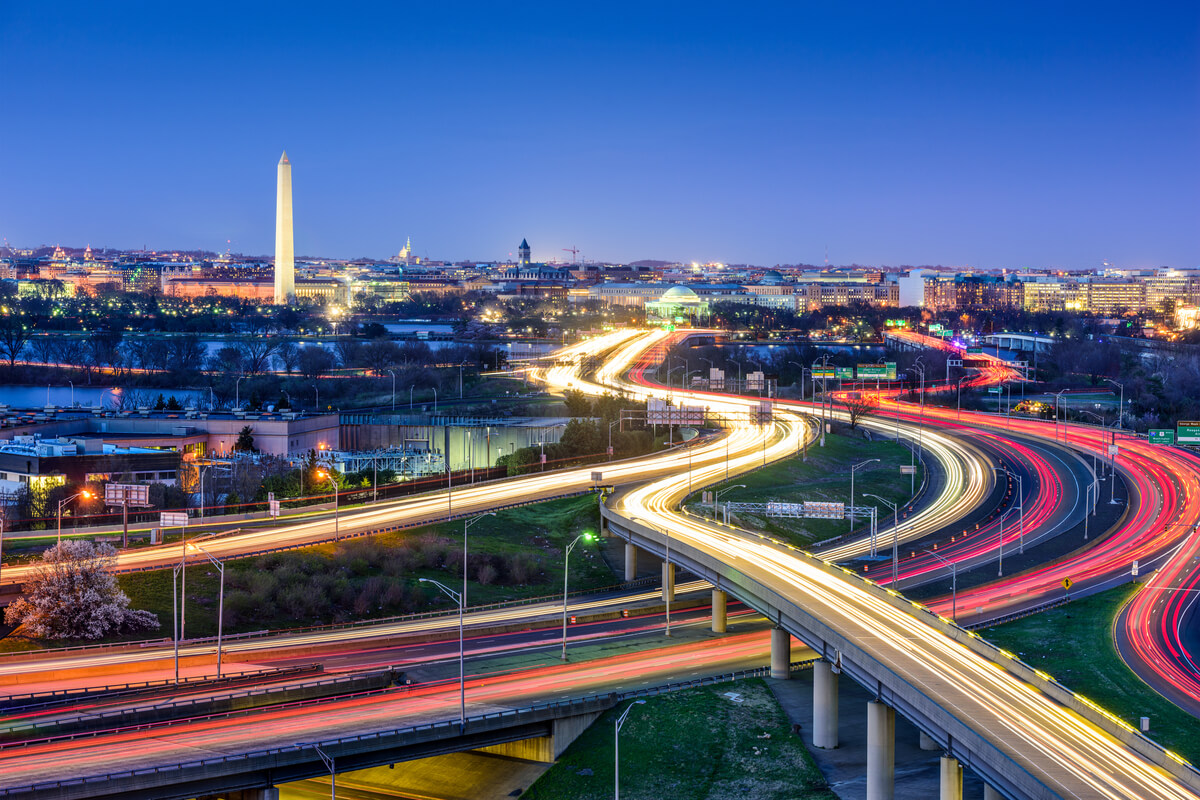
Buy Us a Coffee!
A couple of you lovely readers suggested we set up a tip jar for direct support as an alternative to booking through our links. So we created one!
You can now buy The Broke Backpacker a coffee. If you like and use our content to plan your trips, it’s a much appreciated way to show appreciation 🙂


